JOIN US
On Oct. 11, Crain’s and Tech:NYC will host leaders and experts to explore the future of tech.


CrainsNewYork.com/ techsummit


JOIN US
On Oct. 11, Crain’s and Tech:NYC will host leaders and experts to explore the future of tech.


CrainsNewYork.com/ techsummit


ere’s a awed narrative that New York City’s tech industry is receding. After a decade of embracing a growth-atall-costs mindset, according to this narrative, the sector peaked in 2022 and it’s now feeling the hangover.


ere’s some merit to that storyline.
Venture capital investment in tech is shrinking, and there’s no sign of when it will bounce back. Meanwhile, IPOs are almost nonexistent, and some of the biggest names in tech are bleeding on Wall Street.
A look under the deal sheets, however, paints a more nuanced picture. e city is over owing with available tech talent.
THE STATE OF TECH IN NEW YORK CITY

59% PLAN TO increase tech hires.
Arti cial intelligence is in the early stages of what could be a dot-com-level boom. C-suite executives are con dent in their companies’ growth in New York, according to a new survey, and more tech rms are choosing to do business here than ever before.
See TECH on Page 23

The mayor has now faced criticism for responding slowly to two extreme weather events
By Nick Garber and Caroline Spivack
Defending New York City against climate catastrophe is often described as a long-term project. But Sept. 29th’s brutal rainstorm—and the criticism heaped on Mayor Eric Adams for his delayed public response—showed that environmental issues can present an immediate risk to the
mayor’s political fortunes as well.
Adams said nothing publicly before rainstorms descended on the city Sept. 29, inundating streets and paralyzing the subway system. New Yorkers still hadn’t heard from their mayor when Gov. Kathy Hochul issued a state of emergency for the city and surrounding areas around 10 a.m. He did not appear at a press conference on
the storm until nearly noon, where he vowed to be “ready”—even though the worst of the rain had already passed.
e saga felt like a repeat of the wildre-smoke in ux that lled the city’s skies in June, in which Adams was likewise criticized for sending out only one late-night



See FLOODING on Page 26
Brian ‘Q’ Quinn of ‘Impractical Jokers’ lightens the load for viewers and re ghters alike. PAGE 27


PAGE 15
83% PLAN TO increase their overall workforce.
91% EXPECT DIFFICULTY hiring tech talent.
Target leaving gaping gap in project that pledged to revive East Harlem. PAGE 4

the Environmental Defense Fund kicks off the media blitz in the city and nearby suburbs with a full-page ad in The New York Times
By Caroline SpivackInternational advocacy group the Environmental Defense Fund is throwing its weight behind congestion pricing with a $1 million advertising campaign across the city and nearby suburbs, according to materials shared with Crain’s.
The New York-based nonprofit with a global footprint kicked off a media blitz in support of New York’s plan to toll motorists entering Manhattan south of 60th Street
The EDF was launching a spate of 30- and 15-second video ads on Facebook, Instagram, YouTube and on streaming platforms through the middle of November.
The campaign will continue with physical ads peppered across the city’s transportation corridors, including subway banner ads and on LinkNYC kiosks.
The campaign comes amid last-minute jockeying for exemptions for certain vehicles.
with a full-page ad in the Oct. 1 edition of The New York Times
The ad argues for the public transit and environmental benefits of congestion pricing and lists a coalition of 34 regional organizations that back the tolling program.
“Environmental Defense Fund is thrilled to help get the word out about the broad coalition supporting New York’s first-in-the-nation plan for less traffic, better transit and cleaner air,” Mary Barber, director of state affairs for the Environmental Defense Fund, told Crain’s in a statement.
Crain’s & Tech:NYC will bring together entrepreneurs, investors, policymakers, civic leaders and technologists to explore the growth and investment of tech while creating a new vision on how to keep tech the leading economic driver in New York City. This event programming will feature fireside chats, breakout rooms, demos, pitch workshops and sponsored panels.
DETAILS
Location: Accenture Innovation Hub, New York City
CrainsNewYork.com/techsummit

The campaign comes amid last-minute jockeying for exemptions for certain vehicles, as well as a lawsuit by New Jersey seeking to stall the plan. MTA officials say they have received requests for 122 separate types of exemptions.
Under state law, the tolling program must generate $1 billion in annual revenue for the Metropolitan Transportation Authority. The agency intends to use the revenue to support a $15 billion bond issue to pay for critical mass-transit upgrades.
Each day some 700,000 cars, taxis and trucks clog Manhattan’s central business district. The area is among the most gridlocked in the U.S., with vehicles traveling a sluggish average of 7.1 miles per hour, city data shows.

The MTA projects that congestion pricing tolls will reduce the number of pollution-belching ve-
hicles traveling in the Manhattan district by at least 10% every day, and slash the number of miles traveled within the zone by 5% each day.
The tolls could run between $5 and $23, based on the type of vehicle and the time of day. A six-member Traffic Mobility Review Board is currently tasked with recom-
mending a toll package to the MTA’s board.
The TMRB’s recommendations are not binding, though, and the authority’s board could ultimately approve an alternative version; the public will get to weigh in one
last time during another hearing, after the mobility board makes its recommendations.
In the meantime, the TMRB met publicly for the third time on Oct. 2 as it continues to hash out tolling scenarios.
Congestion pricing is expected to be operational by spring 2024— roughly half a year from now.
The influx of more than 116,000 migrants into the city could ultimately boost New York’s economy—but that opportunity could be squandered unless the city and state invest more in overburdened job-training programs, according to a new report.

The report by the Center for an Urban Future argues that repeated calls by Mayor Eric Adams and Gov. Kathy Hochul to give migrants speedier work permits could mean little, unless those migrants are able to access workforce development programs that are now plagued by lengthy waitlists.
In interviews with 24 nonprofits that provide services such as English-language classes and training in construction and hospitality, more than half of the organizations said they suffer from waitlists ranging from “manageable to extreme,” according to the report, authored by Felipe De La Hoz. English classes in particular are key, since many employment programs offer training only in English.
The Brooklyn Public Library, for example, has enrolled 1,800 people on its English-class waitlist since April 1 and is able to serve only 500 to 600 students each year. In July, 200 people were turned away from a New York Public Library info session on English classes in Midtown, where a line began forming four hours before the event, the report found.
The Restaurant Opportunities Center, which trains future food-service workers, teaches as many as 90 people each year in food handling but gets about 200 requests for certification annually, according to the report.
“We are not funded by the city nor by the state for any of the training, and particularly for immigrants the need has become bigger and bigger and taller and taller,” Rev. Prabhu Sigamani, the center’s director, told the report’s author.
The report’s chief recommendation is that the state fund an expansion of English classes and workforce training programs. Failing to do so could amount to a colossal missed opportunity, De La
Hoz argues, since the growing numbers of migrants would likely uplift the city in a moment when its population is shrinking and employers are struggling to fill open positions.
Tracking existing funding to these nonprofits is difficult, since it comes from a mix of city, state and federal sources. But the latest state budget included just $9.3 million for English for Speakers of
Other Languages (ESOL) courses—less than half, for example, of what it provides for adult literacy education.
Of the 1.6 million New York City residents who speak English “less than very well,” according to census data, just 40,000 are enrolled in ESOL programs.
The mayor’s and governor’s offices did not respond to requests for comment about the report.
 By Nick
By Nick
One of the last Manhattan neighborhoods without a business improvement district will soon shed that status: A coalition of nonprofits, storeowners, residents and real estate developers have banded together in an effort to form a BID along a bustling but troubled stretch of East 125th Street.
The proposal to launch an East 125th Street BID comes as the corridor faces a wave of new development and the arrival of the next leg of the Second Avenue subway in the next decade. But East 125th Street has also struggled in recent years with increasingly visible drug use and unsanitary conditions, which some residents attribute to the high concentration of facilities that treat substance abuse and mental health issues.
“Everybody wants to see this area feel less chaotic, more healthy, more clean,” said Carey King, director of the nonprofit Uptown Grand Central, which is spearheading the BID effort. The city’s Small Business Services Department, which oversees BIDs, approached King’s group about two years ago and suggested they get the ball rolling.
The proposed BID covers about 20 blocks between East 124th and 128th streets, bounded by Second and Fifth avenues— bordering the existing 125th Street BID in Central Harlem. It will need approval by the City Council, likely next year, and its chances seem good, since the effort is supported by local member Diana Ayala.
Above all, forming a BID would allow for a beefed-up version of what Uptown Grand Central does already: clean the sidewalks,
promote the neighborhood and host events. The key difference is, instead of hunting constantly for new funding, the BID’s budget will come from a steady stream of tax assessments from district property owners.
East 125th Street aims to begin with a budget of $750,000 raised through assessments, which could be increased after three years to $1 million annually with a board vote. That would give it about the same revenue as existing BIDs like the Village Alliance and SoHo Broadway; big-dog BIDs like the 34th Street Partnership and the Times Square Alliance take in $13 million and $14 million a year, respectively.
King said the East 125th Street organizers are proud of the unique, equitable formula they devised for determining each property owner’s assessment bill. Instead of imposing fees based on square footage or assessed value, as some other BIDs do, East 125th Street will use a combination of street frontage and taxable value for each property, resulting in more reasonable fees for buildings that contain affordable housing, organizers said. They hope that will incentivize more below-market construction.
BIDs have sometimes aroused opposition in the neighborhoods where they operate, with critics arguing they serve landlords’ in-
terests at the expense of small business, and effectively privatize services the city should be handling. Some BIDs deploy teams of security officers that function as quasi-police forces. (The East 125th Street BID would not hire any security officers, but would bring on a staff person to coordinate with businesses and city agencies to respond to safety issues.)
But the East 125th Street BID has gotten a warm reception so far. Xavier Santiago, who chairs East Harlem’s Community Board 11, said in an interview that he is “over the moon” about the effort. Many in the neighborhood feel an urgency to address East Harlem’s public safety woes, which the BID organizers blame for a spate of retail closures along 125th Street—and which Target also pointed to when it announced the closure of its nearby store on East 117th Street recently.
The BID proposal is led by a steering committee co-chaired by the Durst Organization, which owns a long-stalled development site on East 125th Street and Park Avenue. Also on the committee are fellow developers like Extell Development and Blumenfeld Development Group, which own buildings or unbuilt sites along the corridor, as well as cultural institutions like the Caribbean Cultural Center African Diaspora Institute, which serves as a co-chair. A handful of small businesses, tenant groups and medical in -
stitutions like Mount Sinai Hospital also make up the committee.
After presenting letters of support to the city SBS to show that the proposal has neighborhood backing, the plan will move through the city’s roughly seven-month public review process. Local officials will have a chance to weigh in before an ultimate vote by the City Council, which could happen late next year.
If approved, East Harlem would cease to be the sole community district in Manhattan that lacks a BID of its own. (Nearby West Harlem contains only a sliver of the existing 125th Street BID.) East 125th Street would join a handful of new BIDs created in recent years, like the West Village and Castle Hill, along with the dozens of others created beginning in the 1980s.
Having a full-fledged BID could be seen as a fitting step for East Harlem, which has seen a spate of new development since its 2017 rezoning and will see more growth once the subway arrives. But King emphasized that organizers have no grand visions of a transformed neighborhood, and are instead focused on providing “basic services” to an area that needs it.
“It’s not going to be Disneyland all of a sudden,” she said. “But we hope it’s going to be better, it’s going to be what the community deserves, and it’s going to be a place that’s healthy for families to walk their kids to school and where small business owners don’t have to lock their doors.”
the east 125th plan would end the neighborhood’s status as the only one in Manhattan without a business improvement districtA coalition of nonprofits, storeowners, residents and real estate developers have banded together in an effort to form a business improvement district along a bustling but troubled stretch of East 125th Street. | bLOOMberG
Garber
“Everybody wants to see this area feel less chaotic, more healthy, more clean.”
Carey King, director of Uptown Grand Central
When Target closes its East Harlem location this month, a popular place to buy dresses and dinner plates will be no more.
But the departure may also deal a bigger blow, as it could undercut a key rationale for the existence of its home, the shopping center East River Plaza.
Years ago officials awarded significant tax subsidies to the privately developed, 500,000-square-foot plaza with the expectation that it would provide needed shops for a working-class area lacking in investment.
But the vacancy caused by Target—a tenant since East River Plaza opened in 2010 and one whose 140,000-square-foot berth accounts for about a third of the plaza’s total space—has punched a massive hole in the neighborhood’s fragile retail landscape, some local leaders say.
The landlord, a partnership led by Long Island-based Blumenfeld Development Group, reportedly built the $500 million project with the help of $80 million in tax credits. It’s not clear if East River Plaza continues to benefit from all the subsidies once heaped upon it.
Yet breaks continue to be realized. A $8 million incentive awarded in 2013 through the city’s industrial and commercial incentive program, which is designed to encourage the redevelopment of industrial properties, was still worth about $7 million last year, tax records show. Similarly, the parking garage section of the development, which made up $91 million of the development cost, benefited from $40 million in state tax-exempt bonds that don’t mature until 2037, according to filings.
Although Target’s second-floor location may be the largest available at East River Plaza, it’s not the only one Blumenfeld is contending with. A PetSmart store that shuttered during the pandemic remains empty, and an Applebee’s restaurant at a low-slung, adjacent Blumenfeld-owned building on East 117th Street hung up its apron last year.

And despite a recent spike in storefront leasing activity in some pockets, the city’s overall retail vacancy rate stands at more than 4%, according to second-quarter figures from the brokerage firm Marcus and Millichap, which is the highest rate since 2013.
Blumenfeld’s original partner on East River Plaza was Canyon Capital, though after delays mounted and costs ballooned—an initial estimate of $87 million swelled to $500 million over a decade—developer Forest City Ratner took Canyon’s place. But today global developer Brookfield controls Forest City’s stake, courtesy of Brookfield’s acquisition of Forest City in 2018 for $11.4 billion.

A phone message left for David Blumenfeld, principal of Blumenfeld Development Group, was not returned. A spokesman for Brookfield declined to comment. Target also had no comment.
Plywood fills the windows of this 6-story, 24-unit walkup rental building, which appears to have been vacant since before the pandemic. And a sidewalk shed in front of the structure has generated complaints for years, according to Department of Buildings records. But at least some officials see a promising future for the prewar building, which the city has controlled since seizing it in 1989 over unpaid taxes. This year Manhattan Borough President Mark Levine included it on a list of 171 sites that could help deal with New York’s affordable housing crunch in that they could accommodate 70,000 new apartments total. And because the city already owns No. 311, by way of the Department of Housing Preservation and Development, all 24 of its units could conceivably be offered at below-market rents, Levine said.
In the late 1800s, immigrants from southern Italy began flooding into the neighborhood, and by the 1920s, they numbered around 85,000. One of their houses of worship was the Roman Catholic parish on this site, Our Lady of Mount Carmel, a though-block complex with a rectory, convent and school. Every July 16 saw a well-attended street festival; a similar celebration still takes place each August, when dozen of residents hoist a soaring wooden structure called a “giglio” for the Italian word for lily, on their shoulders and parade it through the streets in a tribute to St. Anthony that originated in the Naples region in the early ADs.
A hint of the historic elegance of an enclave once dubbed Pleasant Village may be glimpsed at this 4-story Italianate dwelling. Heavy with Victorian-era extras such as corbels, window hoods and a stoop, the building was purchased by its current owner in 2011 for $625,000, according to the city register. That owner, Mary Bouderau, is now listing the property for $1.9 million, though she has lowered the price from the $2.2 million she was asking when the listing first appeared in March. Inside the building, which is 14 feet wide versus the 20-foot standard, are three units: a three-bedroom triplex plus two one-bedroom apartments. One of the one-bedrooms rented during the summer for $2,400 a month, according to StreetEasy, though it too had to be discounted to find a taker, even as prices remain elevated. The unit was initially listed in June for $2,600.
The tiny, 10-seat restaurant hugging the base of a modest apartment building here has occupied an outsize role in the city’s restaurant consciousness. It’s Rao’s, founded by Italian immigrant Charles Rao in 1896 but elevated to culinary prominence several generations later in the 1970s by relative Frank Pellegrino Sr. An occasional actor, the bespectacled Pellegrino had a recurring role as an FBI agent in HBO smash The Sopranos. He died in 2017. For years under Pellegrino and continuing today reservations for Rao’s four tables and six booths have been among the hardest to come by of any New York eatery, though Jerry Lewis, Martin Scorsese and Elie Wiesel have all dined there. Mafiosos too have been common. In December 2003 alleged wiseguy Louis “Louie Lump Lump” Barone shot and killed Albert Circelli in the dining room in a fight over a song. In 1992 Pellegrino spun off a line of sauces known for not using any sugar, water or tomato paste. This year Campbell Soup bought the sauce’s parent company, Sovos Brands, for $2.7 billion.
This massive, 285,000-square-foot, Georgian-style building opened in 1942 as Benjamin Franklin High School and James Otis Junior High School. Its founder and first principal was educator Leonard Covello, who emigrated from Avigliano, Italy, in 1896 and grew up nearby on East 112th Street. Large-scale fights that broke out in the early years of the school, which had a mix of Italian American and Black students, were characterized in some news reports as racially motivated, though Covello disagreed and staged a concert with Frank Sinatra in 1945 to show all was well. The troubled facility shuttered in 1982 before re-emerging the next year as Manhattan Center for Science and Mathematics. The Isaac Newton Middle School joined it later. A familiar sight on the FDR Drive, the building has been a city landmark since 2018.
In 1996, when Blumenfeld Development Group bought the first of six lots needed to build East River Plaza here for $3.1 million, the firm anticipated a 2001 completion date. But the multilevel, three-block project on the site of the abandoned Washburn factory struggled to pencil out, according to news reports. A sticking point was how to pay for the parking garage. Retailers including Costco, an original tenant, apparently wanted parking to be free, as it is in their usual suburban locations. But eventually, a paid-parking model for the 1,250-space garage won out. Other critics demanded housing instead of shops. For its part, Target said “organized retail crime” is a cause of the closure, though some have said the East Harlem store’s fringe location was a drawback for drivers. In any event, later this month Target plans to open a store on West 125th Street, in a more central Harlem location, though at 44,000 square feet, it will be much smaller than the shuttered one.
George Frank, a well-known international cabinet-maker, had a shop in this building for years, when this edge of the neighborhood was industrial and when the massive Washburn Wire complex anchored the end of the block. A rare New York feature, an alley, runs along its side. Next door is 510 E. 117th, a prewar walkup building with four apartments. The most recent unit marketed, a renovated three-bedroom unveiled this year, asked $2,900 a month. In 2015 Israel Weinberger’s Coltown Properties, a Lower East Side development firm, snapped up both buildings for a total of $6.3 million before undertaking a renovation that added a retail space at each address. The one at No. 508 contains Lighthouse Fish Market, a two-location uptown chain where a fried catfish sandwich costs $12. No. 510, meanwhile, has Room 112 Lounge, a nightclub known for a lively scene. Its $450 “birthday package” includes three bottles of bubbly and four comped guests.
Target exit leaves yawning gap in project that promised to revive East Harlem
the $500 million East River Plaza was built with $80 million in tax credits. the store occupies 140,000 of the shopping center’s 500,000 square feet.
State officials are calling for new operators to take over at Cold Spring Hills Center for Nursing and Rehabilitation in Woodbury, claiming that the current owners of the facility have created conditions that put residents’ health and safety at risk.
Last month, Attorney General Letitia James ordered the current owners of Cold Spring Hills to appoint an independent health care monitor—a temporary oversight body that will manage the nursing home’s finances—in light of state investigations into employee conflicts, financial fraud and resident care.
The attorney general’s call for a new monitor is a temporary fix until state health officials appoint a new owner to take over entirely. At the beginning of September, the Department of Health filed a petition to appoint an emergency caretaker at the nursing home—an operator who will completely absorb resident care and operational responsibilities, legal documents say.
Dr. James McDonald, state health commissioner, said in court documents that state law allows officials to appoint a new caretaker at nursing homes with conditions that are “dangerous to the life, health, or safety of residents of a facility.”
“Such conditions exist at Cold Spring Hills,” McDonald said.
Cold Spring Hills has been the subject of state scrutiny in multiple cases over the last year. Most recently, over 400 employees represented by the health care union 1199 SEIU urged health officials to step in after the nursing home stopped paying for their health care benefits.
The missing payments have put employees’ health insurance at risk of expiring since the end of August. While the operators have made temporary payments to push back that expiration, the payments are not enough to maintain insurance after Oct. 15—spurring many employees to look for new jobs to ensure health care access.
Clashes with employees over their benefits come on the heels of a sprawling state investigation into the nursing home’s financial mismanagement and patient care conditions. In December, James sued Cold Spring Hills for diverting $22.6 million in Medicare and Medicaid money, alleging that operators obfuscated federal funds in an attempt to increase their own profits, all while neglecting residents. The suit is one of a series of cases that the attorney general filed against nursing home operators last year, cracking down on controversial business practices.
John Martin, an attorney at Garfunkel Wild who is representing Cold Spring Hills, did not respond to a request for comment by publication.
The state’s actions against Cold Spring Hills happen to target some of the largest nursing home operators in the state, noted Bill Ham-
mond, a senior fellow for health policy at the Albany-based Empire Center for Public Policy.

Cold Spring Hills, a 588-bed for-profit facility, is owned by wellknown operators Bent Philipson, as well as his son Avi Philipson, Benjamin Landa, among a dozen other owners. The 15 defendants named in the attorney general’s case own 37 nursing homes in New York and more than 200 across the U.S., federal data show.
As the attorney general continues
to take action against nursing homes—and operators who own a large swath of facilities across the state—there remain questions around whether there will be any operators willing to take over as caretakers who haven’t been sued already, Hammond said.
The health department’s petition to appoint a new caretaker at Cold Spring Hills is the first time the agency has intervened in one of the attorney general’s recent nursing home cases, Hammond added, not-
ing that the move to take action based on challenges with employee benefits, rather than resident care issues, reflects the challenges with regulating powerful nursing home owners.
“This is the department’s job, to make sure nursing homes are wellrun, safe and treat their residents properly,” Hammond said. “The attorney general’s lawsuits, in a sense, are kind of embarrassing because this stuff has been going on under the department’s nose.”
If lawsuits are accurate, the challenge for the state is that most of the nursing homes are run by owners responsible for financial fraud and resident neglect, Hammond added.
“If you really bring the hammer down on those people and say, ‘look, you can’t operate in the state anymore,’ you’re gonna have dozens and dozens of homes with no owners,” Hammond said.
A spokesperson for the health department said the agency cannot comment on pending litigation.






$0 deductible plan options?




$0 copays for 24/7 Virtual Visits?
You’ll get that. Plus, a $700 earning potential for achieving certain wellness goals.¹ These are just some of the ways an Oxford health plan may help your employees and your business’s bottom line get healthier.

1 Oxford fully insured subscribers can apply for reimbursement up to $200 when completing 50 workouts in a 6-month period (up to $400 per year). Workouts consist of fitness facility visits, physical fitness classes and fitness events. Subscribers may also earn up to $300 annually for completing certain one-time activities and reaching certain wellness goals.
Oxford insurance products are underwritten by Oxford Health Insurance, Inc.


This policy has exclusions, limitations and terms under which the policy may be continued in force or discontinued. For costs and complete details of the coverage, contact your broker or Oxford sales representative.
Oxford $0 deductible plans are available for New York-sitused employers and can be paired with either the Freedom, Liberty or Metro network. $0 24/7 Virtual Visit copays apply to all Oxford fully insured plans. Plans sold in New York use policy form numbers: OHINY_SG_GEA_2023 and POL20.OHI.2019.LG.NY.
24/7 Virtual Visits is a service available with a Designated Virtual Network Provider via video, or audio-only where permitted under state law. Unless otherwise required, benefits are available only when services are delivered through a Designated Virtual Network Provider. 24/7 Virtual Visits are not intended to address emergency or life-threatening medical conditions and should not be used in those circumstances. Services may not be available at all times, or in all locations, or for all members. Check your benefit plan to determine if these services are available.
Bob Menendez might nally be nished.
e New Jersey senator, who beat one corruption indictment already when a jury deadlocked in 2017, faces new federal bribery charges. He and his wife are accused of taking hundreds of thousands of dollars in bribes in exchange for helping increase American assistance to Egypt and trying to foil a pair of criminal investigations involving New Jersey businessmen. Investigators who searched their home found piles of cash, gold bars worth $100,000, and a Mercedes-Benz.
Phil Murphy, New Jersey’s Democratic governor, and Sen. Cory Booker have both called on Menendez to resign. He’s refused and pleaded not guilty.
Menendez survived once because the Supreme Court, in a 2016 case involving former Virginia governor Bob McDonell, drastically narrowed the de nition of political corruption. He might hope the feds fail again; he has told reporters, without providing much evidence yet, that he will be exonerated.
Perhaps he is right. But it won’t be the corruption allegations alone
that nish him. e senator, at last, has a viable primary challenger.
In 2018, Menendez faced a little-known perennial candidate, Lisa McCormick. Despite operating on the political fringes, McCormick managed almost 40% of the vote, evidence even then that New Jersey Democrats were tiring of his act. is time around, he will have to contend with Andy Kim, a congressman and former Obama administration o cial who has won several tough elections in a swing district.
Until now, Menendez never had to run against someone like Kim. He was the Democratic establishment’s kingpin and a proud product of the Union City machine—a man who inspired equal parts fear and devotion. A trailblazing son of Cuban immigrants, he was always a force to be reckoned with, the sort of politician no Democrat or Republican wanted to cross.
Kim, 41, has only been in Congress since 2019. He is a strong fundraiser with a deep well of support in Washington. Menendez can’t intimidate him.
And it’s increasingly unlikely Menendez can win another elec-
tion. e corruption trial will damage him, and Kim can easily position himself as the young, reform-oriented progressive. National liberal groups and local labor unions have endorsed him already.
Kim has his own history to make. He is the rst Asian American to be elected to the House from New Jersey and would be the state’s rst Asian senator. His only real stumbling block would be a crowded primary: New Jersey First Lady Tammy Murphy, as well as fellow Congressman Donald Norcross, are rumored to be considering runs for Menendez’s seat.
It is plausible, too, that Menendez decides to stay in o ce through 2024 and simply doesn’t seek re-election. Chuck Schumer, the Senate majority leader, could pressure him to not run again, since Democrats have a perilous ght ahead of them to keep their slim majority.
At the very minimum, Menendez won’t resign just yet because he’ll need his seat as a bargaining chip with federal prosecutors— George Santos is in a similar position—and Democrats don’t want to temporarily lose another Senate vote after Dianne Feinstein’s death late last month.

If Menendez announces, as
Schumer and Murphy prefer, that he’s not running again, Kim will certainly not have the eld to himself. An open race could attract Tammy Murphy, Norcross and several other Democrats. New Jersey, like California, would be a hotbed of national political intrigue for much of the next year. And grateful residents will cheer the end of the Menendez era.
Quick takes
◗ Mayor Eric Adams faced a new
round of criticism for his slow response to the ash oods that battered New York on Sept. 29. Adams, unsurprisingly, had been out partying the night before, and it’s increasingly clear his lifestyle is becoming a political liability. ◗ e averted government shutdown is good news for the Republicans in the New York suburbs. Democrats there could have tried to tie them to the party’s unpopular far-right fringe.
e U.S. District Court for the Southern District of New York has sentenced the former head of landlord Urban Residences to nine months of house arrest and two years of supervised release for a bribery and kickback scheme involving one of the largest homeless shelter operators in the city.
Brooklyn native Sheina Levin, who pleaded guilty in an agree-
partment of Investigations and U.S. Attorney for the Southern District of New York Damian Williams found that between 2019 and January 2021, Levin paid bribes and kickbacks to Victor Rivera, the former chief executive of homeless services provider Bronx Parent Housing Network. e investigation found that Levin paid hundreds of thousands of dollars to Rivera in exchange for the nonpro t subleasing properties controlled by Levin’s Urban Residences.
Crain’s could not independently verify when Urban Residences was established, where it was based or exactly how it conducted its business.
ment with prosecutors, also was ordered to pay more than $1.6 million in forfeiture and restitution as part of a plea agreement.
e former CEO pleaded guilty to one count of conspiracy to commit honest services wire fraud. She avoided a trial as part of the terms of the plea agreement.
An investigation by the city De-
DOI opened an investigation into Rivera following a report in e New York Times that found 10 women had accused him of sexual assault and harassment.
Mayor Bill de Blasio said the allegations should be investigated by DOI or an independent auditor, according to a report from 2021 by News 1 New York.
Rivera, who pleaded guilty in
February 2022 to conspiring to commit honest services wire fraud, was sentenced in May 2022 to two years and three months in prison for taking bribes from contractors between 2013 and 2020.
Rivera was ordered to forfeit $1.2 million and to pay Bronx Parent Housing Network $902,000 in restitution.
According to a report in e Real
Deal, Bronx Parent Housing Network has received $274 million from the city to run shelters since 2017.
An IRS Form 990 from the nonpro t says it received $70 million in grants between July 1, 2021, and June 30, 2022. e city Department of Homeless Services provided a $55 million payment to the homeless services group, while
the city Human Resources Administration paid $14 million over the same period of time.
DOI Commissioner Jocelyn Strauber said in a statement that Levin’s felony conviction shows that those who put personal greed ahead of the needs of city residents will face serious consequences.
Michael Farkas, the attorney representing Levin, said she is appreciative of the government’s consideration and diligence throughout the investigation.
“Mrs. Levin acknowledges her terrible mistake . . . and she is committed to making full amends for her conduct,” he said.
Bronx Parent Housing Network, which is now led by Seth Muraski, did not respond to an interview request by press time. DOI declined to comment on Levin’s sentence.


Sheina Levin pleaded guilty to one count of conspiracy to commit honest services wire fraud.Bronx Parent Housing Network | GOOGLE STREET IMAGE
S&P Global has upgraded the bonds used to build Hudson Yards, delivering Manhattan’s beleaguered office sector a welcome piece of news.

The largest private development in U.S. history when it opened four years ago, Hudson Yards’ 18 million square feet of supertall towers, shops and restaurants failed at first to produce the expected revenue. That put New York taxpayers on the hook between 2010 and 2015 for $359 million worth of interest payments, 40 times higher than projected, paid to institutional investors for various infrastructure projects. When the pandemic hit and tenants such as Neiman Marcus closed shop, some feared Hudson Yards would become a $25 billion white elephant.
But construction continued at
the odds taxpayers will be asked to dip into their pockets again to support the supertalls. S&P upgraded the Hudson Yards bonds to AA from AA-, the same credit rating as the city’s.
Hudson Yards negotiated a significant discount on its annual property tax bill and instead it makes what are known as payments in lieu of taxes, or PILOTs. The agreement with the city saved more than $50 million off the towers’ theoretical property-tax bill of about $150 million last year. Earlier this year City Comptroller Brad Lander, who had worried that the deal would shortchange the city, admitted Hudson Yards was performing better than expected and producing hundreds of millions annually for the city.
the site all the while, and on Sept. 26 S&P deemed Hudson Yards is now generating more than enough cash on an ongoing basis to pay debt-holders, which lowers
Rising revenues “are now more than sufficient to cover debt service,” said S&P analyst Felix Winnekens, which mitigates the risk of “non-appropriation,” or the possibility that the city would refuse to pay institutional bondholders all they’re owed if revenue shortfalls emerge.
Hudson Yards tenants include
BlackRock, KKR and Pfizer, who have relocated headquarters there. In general rents and occupancy rates at new office buildings have held up better than at older ones. At Vornado Realty Trust, which owns several buildings near Hudson Yards, the occupancy rate is 90%. The average citywide across all buildings is about 80%.
On Sept. 27, Wells Fargo agreed to occupy the space vacated by Neiman Marcus. The bank will convert most of the space to offices.
PILOT revenues at Hudson Yards grew by $40 million between fiscal 2020 and 2023, to $160 million, according to financial statements from Hudson Yards Infrastructure Corp., a city agency. Winnekens said PILOT revenues are expected to grow by an additional 44% by 2027. Interest expense in fiscal 2023 was $95 million, or $20 million less than three years ago, according to a financial statement released recently.
Jon Weinstein, a spokesman for developer Related Cos., said: “Hudson Yards is an incredible financial success for the city of New York and taxpayers. With the strongest office market in the country and a flourishing mixeduse neighborhood, we look forward to continuing to deliver returns that support critical city services and the MTA.”
 By Mario Marroquin
By Mario Marroquin
Dumbo-based real estate developer Two Trees Management delivered 460,000 square feet of office and retail space at the former Domino Sugar Refinery last month. The 15-story property, located at 300 Kent Ave., is part of the developer’s $2.5 billion mixed-use play in Williamsburg, which will deliver apartments, retail and office space at the former Domino Sugar campus by 2026.
Two Trees invested approximately $150 million to rehabilitate the property, which was built in 1884. The building includes 60,000 square feet of retail space and a fitness club with an indoor pool and a full-service gym. A 27,000-square-foot glass dome penthouse was added to the structure that could serve as communal, event or private club space, according to the developer.
The refinery building was landmarked in 2007, three years after Domino shut down operations and moved to Yonkers. The property was acquired by Two Trees in 2012 for $185 million, according to a report in The New York Times.
The entire office portion of the former refinery was delivered on a speculative basis three years after Two Trees delivered 162,000 square feet at 10 Grand St., located one block north. That building is 100% leased, according to real estate research firm CoStar, despite an overall slowdown in office leasing in the borough and in the city.
Brokerage firm CBRE found
that 353,000 square feet of office space had been leased in Brooklyn in the first two quarters of the year, which represented a 5% decrease in leasing compared to one year before. The average asking rent at the end of the second quarter had increased 13% on a year-over-year basis to $53.50 per square foot, the brokerage firm said.
In response to questions about
the outlook of the project in light of the state of the office market, Two Trees CEO Jed Walentas told Crain’s that the project is meant to service the borough’s “dynamic workforce.” The company is actively marketing the space to tenants, but none have signed on just yet.
“Our vision for the Domino site has always been to cultivate a vibrant mixed-use community on the Williamsburg waterfront,” he said. “The Refinery at Domino is the centerpiece of this vision.”
Management at Two Trees said it projects the cost to develop the entire Domino campus to reach $2.5 billion, and when completed, it will contain 2,800 apartments and 600,000 square feet of office space across seven buildings and six acres of parks and open spaces.
Morningside Heights-based Union Theological Seminary recently acquired 27 condominium units in the newly built high-rise at 100 Claremont Ave. The Columbia University-affiliated seminary paid $24 million for the apartments at the 354,000-square-foot building, according to records filed with the city register.
The 41-story building, known as Claremont Hall, is on the seminary’s grounds. It includes 165 condominiums, a 48-foot swimming pool, a gym, a library, a residents lounge, and 54,000 square feet of classroom and academic office space immediately adjacent to the James Memorial Chapel.
The seminary acquired the units, on the fourth through ninth floors, Sept. 15, according to a property transfer filed with the city register 10 days later. Carolyn Clendenin, a spokeswoman for the seminary, said the units will be occupied by faculty, and it is working on acquiring an additional condo.
Sales at Claremont Hall began in spring 2022, and marketing materials say one-bedroom units start at $1.3 million. Management at the building did not disclose total sales figures to date or how many units had been sold so far.
The high-rise is a joint venture among Australian developer Lendlease, Westchester-based developer LMXD and Japanese construction firm Daiwa House. It was designed by Robert A.M. Stern Architects and builds on the Gothic style of the seminary’s campus.
Lendlease said in 2020 that Massachusetts Mutual Life Insurance subsidiary Barings provided a construction loan for $250 million. A report in the New York Post from April 2022 says Claremont Hall has been in the making for approximately 40 years.
The seminary’s senior strategic adviser, Frederick Davie, told the Post at the time that the seminary began planning for the development in the 1980s, while it was trying to find money to pay for the upkeep of the campus.
By 2017 the seminary had figured out it could sell 30,000 square feet of air rights at the site, according to the Post, and in 2020 it transferred the air rights to the developers for $61 million, according to city records. The development team broke ground on Claremont Hall in 2020, with construction set to wrap up in January 2024.
Hudson Yards tenants include BlackRock, KKR and Pfizer, which have relocated headquarters there.
The 15-story property is part of Two Trees Management’s $2.5 billion mixed-use play in Williamsburg.Hudson Yards | bLOOMberG The Refinery at Domino in Williamsburg MAX tOUHeY/ tWO treeS MANAGeMeNt
Just as Broadway nds gold in a good revival, NYC’s civic and business leaders are printing an updated batch of the “New York City Card” that once shared wallet space with Blockbuster and MTA fare cards.

e game plan, if the CEOs holding them play their cards right, is to align elected o cials and business leaders around a set of New York legislative priorities, from the migrant crisis to a ordable housing, infrastructure to taxes. Even with a Democratic president, the city has struggled to get its legislative priorities enacted, making it all the more critical to present a uni ed front.
“ e problem of the migrant crisis and the impact it was having on the New York City budget was largely ignored by the White House and Washington for a year,” said Kathy Wylde, who heads the Partnership for New York City, which unveiled them last week at a gathering that brought together Mayor Eric Adams, Gov. Kathy Hochul, U.S. Senators Chuck Schumer and Kirsten Gillibrand, and several top CEOs who regularly hear from
elected o cials raising funds.
“When we came together and started really putting on the pressure this summer, that changed, and now they’re responding and helping us,” Wylde added.







e tradition started in 2006, when former Mayor Michael Bloomberg held annual events in which he distributed wallet cards to the city’s CEOs that listed New York’s top legislative priorities at the federal level. At one point, the “New York City card” instructed its recipients to press Congress to create a health care program


Congestion pricing, the Metropolitan Transportation Authority’s proposed Central Business District tolling program, appears to be close to reality after many years of debate. Gov. Kathy Hochul said it will “ensure the city’s long-term success.”
However, with proposals ranging from $5 to $23 per vehicle entering the zone from 60th Street south to the Battery in peak hours, congestion pricing would bring nancial ruin to thousands of New York’s medical rst responders employed by the FDNY Emergency Medical Services.
EMS workers’ horri cally low pay, for both emergency medical technicians and paramedics, has been an ongoing and unaddressed crisis for years. ey are responsible for protecting the lives of their fellow New Yorkers but are paid only a fraction of the city’s other front-line rst responders. e stark di erence is about 40% to 50% less. An EMT starting salary is $39,386.
Given this and the devastating cost of living in New York, many EMS members are forced to live outside of the city and commute into work.
Unless there are exemptions for New York’s medical rst responders, few if any EMTs or paramedics would consider working in station houses in the pricing zone. Once a driver enters that area — BAM — you’re hit with the MTA’s surcharge, which is far above our pay grade.
New York City’s EMS service is the busiest in the world, responding to millions of medical emergencies. In 2022, FDNY EMS responded to 1,580,871 medical emergencies — a rather large 100,000 increase over the prior year.

Let’s consider a price of $23 to enter Manhattan. If an EMT works ve days a week, earning $18.93 per hour, congestion pricing would equate to 1.5 hours of each day’s pay, or $115 per week. at doesn’t include paying for gas or tolls, just to make it into work.
Either way, this is simply too much for what EMTs are earning. We simply won’t be able to a ord to protect New York City.
Already attrition exceeds 30% after three years and 50% after ve years, due to the high stress and low wages, which force most to moonlight with second jobs just to
for 9/11 survivors—a push that ultimately paid o in 2011.
is time around, funding for the migrant crisis takes top billing—speci cally, expedited work permits for asylum-seekers, $12 billion in aid for the city, and policies to control border entry and distribute migrants across more of the nation, as Crain’s New York reporter Nick Garber noted last week.
Other demands include eliminating the $10,000 cap for state and local tax deductions; expanding Section 8 housing

vouchers and helping fund the New York City Housing Authority’s urgent capital needs; $4 billion for infrastructure funding for the city’s roads, bridges and transit; and increasing funding for education and workforce training.
It’s an important and thoughtful wish list and wise of the Partnership to coordinate across the city and state to present a uni ed front in Washington.
Simultaneously we must acknowledge the federal government can’t cure all of New York’s ills: state and local o cials must roll up their sleeves and tackle tough questions within their own sphere of control, from reinstating incentives supporting the creation of more a ordable housing, to prioritizing investments in green infrastructure, to spending less time sniping about the migrant crisis and more time coordinating on solutions.
Presenting a united set of federal priorities is a great place to start.
continue serving the people of a city they themselves can’t a ord to live in.
After going through the academy, and receiving on-the-job experience, eventually medical service responders recognize the uncompetitive pay and poor working conditions. Many leave for other cities or even jobs with private rms, where they can easily make $20,000 to $30,000 more per year.
New York spends tens of thousands of dollars training each EMS professional but compensates them more like teenagers on a weekly allowance. It’s why our force is constantly experiencing massive job turnover.
Congestion pricing without exemptions for FDNY EMS workers would place an even greater nancial burden on individuals already struggling. It has the likelihood of further harming recruitment and drastically increasing resignations.
e dedicated women and men of EMS — and the great citizens of New York we are sworn to protect — deserve better. Congestion pricing will threaten the ability of our city’s true lifesavers to continue doing their job. After decades of discussion and debate on these topics, it’s about time to make the positive impact of the FDNY EMS more central to the strategic planning and budgeting of our city.
Arecent report from the Urban Institute explores the prevalence of medical debt in the 10 economic regions of New York state and lays out the interconnected ways that debt affects communities.
By the researcher’s estimation, about 6% of New Yorkers have medical debt in collections and on their credit report. It’s worth noting that the number may actually be higher. Medical bills paid with borrowed money — from a friend or family member — or put on a credit card are masked from research like this. Not to mention that many hospitals do not put medical debt on credit reports.

Per the Urban Institute, the national average for medical debt in collections is 26%. So, New York is doing a lot of things right. We know, for example, that medical debt is higher in southern states where Medicaid hasn’t been expanded.
New York has good laws in place that make Medicaid accessible and provides navigators for insurance; it has many hospitals with generous financial aid. All hospitals in New York are already non-profit or government run which means they are re-
PERSONAL VIEW
quired to provide financial assistance and invest in community benefits. New York state has also recently passed positive reforms, including a bans on medical debt credit reporting and the banning of liens on homes or garnishment of wages for medical debts.
Yet medical debt persists for those most financially burdened, and while we are doing well relative to the rest of the country, the truth is, that’s a low bar.
In New York communities with the most medical debt, per the research, prevalence is between 9.7% and 37.6% — at its extreme more than 10 points higher than the national average. We know from existing research that Black adults and Hispanic adults are 50% and 35% more likely, respectively, to carry medical debt, so there’s little surprise that debt is more concentrated in communities of color compared to white ones. And while it’s no shock that low-income people are more likely to be burdened by medical debt, it’s these communities hovering near the poverty line that should be receiving targeted support. These results are a clear call for larger reform, necessitating collaboration from
businesses and local, state and federal governments. And even beyond race, accounting for differences in local demographic and health characteristics observed in the data, living in certain regions was associated with a greater risk of having medical debt. There are geographic blind spots, often rural, that are predisposed to medical debt and need to be protected against its emotional and financial drain.
For substantive change we need the federal government’s buy-in. There has been positive news on that front. Recently the Biden administration banned short term “junk” insurance plans, limited out-ofpocket drug costs for those on Medicare, and began investigating medical credit cards. Greater subsidies for health insurance are also needed. More than half of private sector employees in New York have high deductible plans which leaves them exposed to thousands in out-ofpocket costs.
For businesses, new research from New York-based nonprofit Neighborhood Trust



Lower-income New Yorkers have historically been last to receive good transportation investments — new subway stations, express bus routes, bike lanes, etc. — while bearing the brunt of harmful transportation infrastructure, including all the Robert Moses-era highways that literally tore through Black and brown neighborhoods and today contribute to extreme rates of childhood asthma in places like the South Bronx.
We’re in a major transportation shift in New York: the adoption of electric vehicles. Until recently, most people were priced out of electric vehicle ownership, and charging infrastructure was developed geographically to reflect that. Today, EVs are not a luxury item, but charging access still is.
EVs will remain out of reach, no matter the affordability, if drivers lack access to reliable charging, which is true in much of the Bronx, Upper Manhattan, Queens and Brooklyn. Particularly bad are transit deserts where residents rely on personal car ownership or commuter vans to get to work or school. They are also areas with high populations of Uber and Lyft drivers who, per a new initiative from Mayor Eric Adams, will need to provide their rides in
an EV or wheelchair accessible vehicle by 2030. These communities stand to benefit the most from electrification and the improved air quality it will bring, but they can’t get there without local investments in public charging infrastructure.
The incentive to build charging infrastructure in New York is low because there are not enough EVs to justify the steep development costs. Yet this public infrastructure is necessary to the EV transition here because, unlike suburban Americans, New Yorkers typically don’t have home garages to charge overnight in. EV owners in the city are left with curbside chargers that

that can charge EVs in minutes not hours and are never paywalled. Revel is expanding to over 300 chargers across the South Bronx, Maspeth, Harlem, Red Hook and more. But New York will need thousands of chargers to support the full EV transition, and innovative partnerships are needed to get there.
Revel and Dollaride just announced one such partnership that will encourage EV adoption in historically disadvantaged neighborhoods and create more demand for charging. Dollaride helps drivers for commuter vans, which are TLC-licensed vehicles serving transit deserts, transition to electric vehicles, among other clean transportation efforts. While they are not mandated by the city’s new Green Rides Initiative to electrify, commuter vans help communities most harmed by car exhaust, and so they can have an outsized impact going zero-emission.
explores the very question of employer sponsored health insurance. It found that nearly half (48%) of employees surveyed struggled to understand their insurance and more than one in three had similar issues understanding medical bills. Employers can maximize the ROI of their investment by providing institutional support in navigating insurance. As the Urban Institute study aptly puts it, “Deferred care caused by insufficient coverage and medical debt translates to worse health outcomes, [resulting] in missing work, reduced productivity, increased health care costs, and job attrition.”
Even in a state with relatively progressive protections for people against medical debt, the problem persists. New York has powerful representatives in Washington. We need them to take on the issue of medical debt along with state government and business leaders in partnership with health care providers. The work continues.
take hours if they are lucky enough to find a spot, or chargers in garages locked behind pricey parking fees.
Revel is creating a third way, with a network of 24/7 public fast-charging hubs
Dollaride is deploying more than $20 million in partnership with the New York State Research and Development Authority, Elemental Excelerator and other project investors to help commuter van drivers procure EVs. Without convenient access to charging, though, that is still not the easiest sell. To start solving that imbalance, Revel will give Dollaride’s commuter
van drivers guaranteed spaces and discount charging at its flagship fast-charging station in Bedford-Stuyvesant, Brooklyn. Revel will also provide monthly charging reports to Dollaride, which support battery efficiency and longevity. This partnership provides a clear pathway for commuter van drivers to not just get an EV, but know they can operate it successfully. We cannot go blindly into the electric era. We have an opportunity to learn from the mistakes of the past and choose not to repeat them. The EV transition will make New York healthier and cleaner; with the right investments, it can make it more equitable too.
Electric vehicles will remain out of reach, no matter the affordability, if drivers lack access to reliable charging.



The attorneys featured here are included among the Super Lawyers and Rising Stars selectees. For a complete list of selected attorneys, including additional areas of practice, visit superlawyers.com . There you will also find information about the Super Lawyers patented selection process.
What is Super Lawyers In Focus?




Super Lawyers recognizes attorneys in the clients they serve.
REAL ESTATE
S-2
HIGH-ASSET CONTESTED DIVORCE
S-2


A premier family law firm, Rabin Schumann and Partners LLP is recognized for landmark decisions, skilled courtroom advocacy and creative resolutions. Our team is dedicated and solution oriented, with a focus on high-net-worth and complex matters. Our skilled practitioners develop a customized approach for each client, implementing result-driven and cutting-edge legal strategies. Serving clients in all industries, including finance, technology, media, fashion, the arts, advertising, real estate, law, medicine and homemakers, the attorneys at Rabin Schumann and Partners strive to maintain the highest ethical and legal practice standards while meeting our clients’ individual needs and objectives. With decades of experience and proven results, the firm is committed to guiding clients through difficult life transitions with sensitivity, sophistication and discretion.

Rosenberg & Estis, P.C. provides full-service representation and advice in every aspect of real estate. We are proud of the way we have shaped the NYC skyline for nearly 50 years.
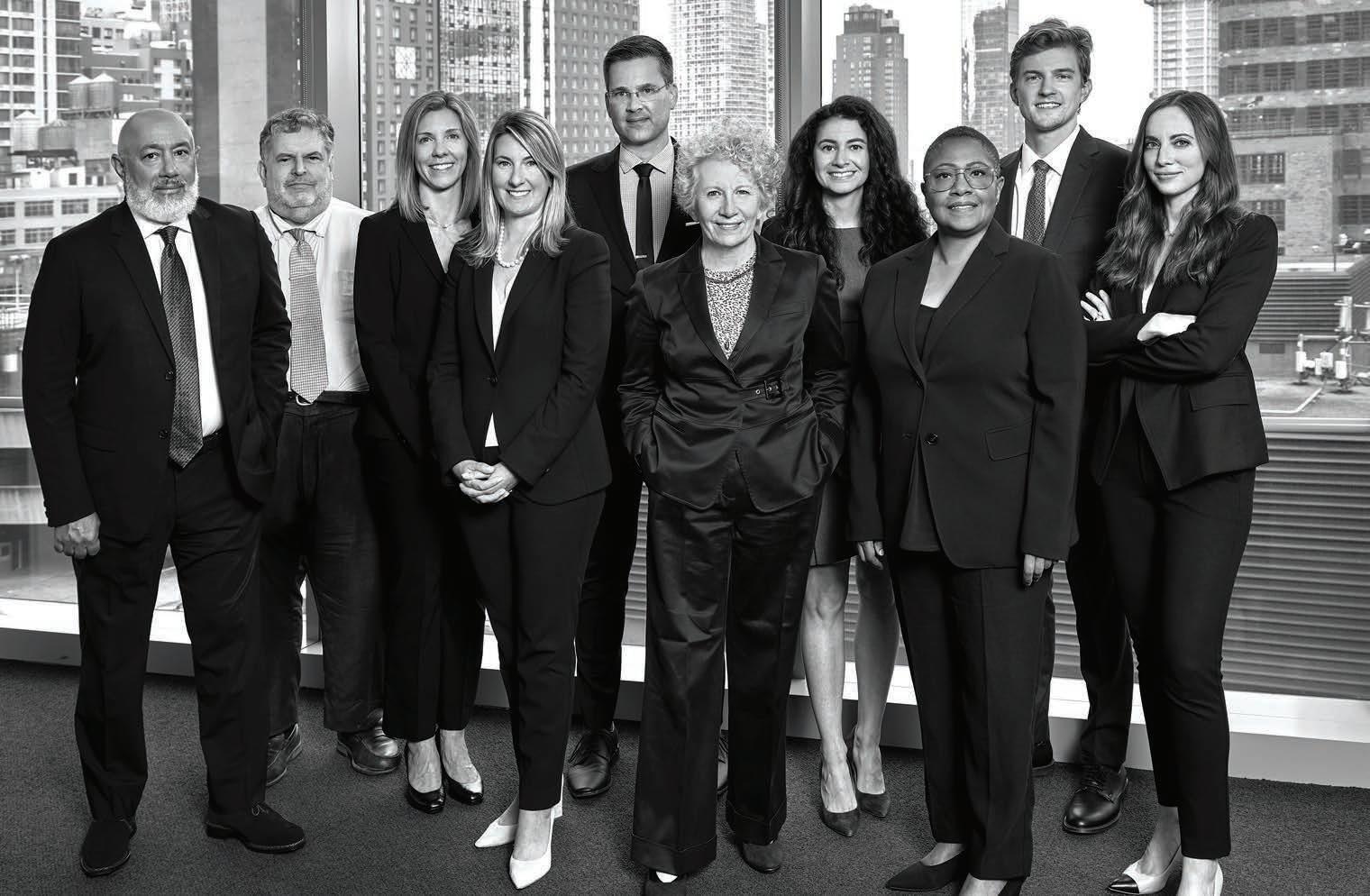


Our attorneys anticipate real estate trends and approach them with creative solutions, making us the ideal thought partner for owners, developers, not-forprofit corporations, educational institutions, sponsors, equity investors and lenders in both real estate transactions and in all New York State, Federal Trial and Appellate courts.

733 Third Avenue New York, NY 10017 (212) 867-6000 | rosenbergestis.com
*Selected to Super Lawyers **Selected to Rising Stars
11 Times Square, 10th Floor New York, NY 10036 (212) 512-0802 | rsaplaw.com

e 2007-2008 mortgage crisis and subsequent recession marked a “clear demarcation” point for the tristate area’s severe housing shortage, according to a new report from the Regional Plan Association.
e organization analyzed building permit data from the past 30 years to better understand how New York, New Jersey and Connecticut arrived at the current housing crisis. It found that in 2009 “the number of new residential units in the region collapsed to its lowest point in recent history,” a collapse that the region has yet to fully recover from, the report says.
e report divided much of its data into the 12-year prerecession period of 1997 to 2009 and the 12year post-recession period of 2010-2022. e comparison of these periods shows an incomplete housing construction recovery, a sharp decline in midsize residential buildings and a severe lack of new homes on Long Island in particular.
During the prerecession years, o cials in the region issued permits for about 741,000 housing units, while during the post-reces-
sion years, they permitted about 684,000 housing units for a 7.5% decline. When factoring in population growth, this equals out to a 13% decline in housing units per capita.
Long Island singled out
e city’s housing per capita rate did not drop too sharply preversus post-recession, falling from 32.2 to 30.4 homes per 1,000 residents, according to the report. However, this rate plummeted in the suburbs, falling from 21.9 to 9.3 homes per capital on Long Island and from 50.3 to 29 in the Mid-Hudson Valley.
e city did see a huge drop in buildings with two to four housing units after the recession, which the report describes as the “missing middle.” e overall tristate region permitted 112,500 such homes from 1997 to 2009, almost 75,000 of which were in the city, but this fell to 34,700 from 2010 to 2022, just 15,000 of which were in the city, according to the report.
Increasing production for these types of homes should be a major priority, as they are not particularly disruptive to existing community layouts and provide homes at “a
wide variety of price points and needs,” the report says. ey provide good opportunities for smaller developers to take on projects as well.
e report singles out Long Island for its especially slow housing growth even compared to the rest of the region. From 1997 to 2009, it permitted 62,000 housing units, or 8.4% of the region’s total, but from 2010 to 2022, it permitted 27,000 housing units, down to 4% of the region’s total.
And despite its limited amount of land, the region “overwhelmingly” issued permits for single-family homes rather than multifamily buildings, permitting 20,300 single-family units and only 6,500 units in buildings with at least ve homes.

“Meager housing production in Long Island has coincided with a recent population decline, and the trend may be linked to the island’s limited housing options,” the report says. “In contrast, greater housing production in New Jersey has coincided with faster population growth, as well as a swift post-pandemic job recovery.”
Gov. Kathy Hochul and Mayor Eric Adams have both made addressing New York’s housing
shortage a top priority. Hochul’s e ort to pass a broad legislative package that would have included housing growth mandates across the state failed earlier this year, and she announced a series of executive actions meant to spur housing growth during the summer. Adams last month o cially unveiled a broad package of zoning reforms that his administration says could help build up to 100,000 homes in the next 15 years.
e report compliments Adams’
HONORING
Proceeds for this event will support 1199SEIU Child Care Corporation’s programs and services, which continue to help healthcare heroes and working parents bridge the child care gap.



For more information or to purchase tickets, please scan this QR code:
recent proposals, saying they show how the city “is leading by example,” while slamming the dearth of action at the state level.
“ e lack of progress during recent state legislative sessions—in the tristate as a whole but most notably in New York—should not be acceptable,” it says. “State actions are urgently required, but legislators are failing to act on important policy choices that would improve the vitality and diversity of the region for generations to come.”

Often hailed as the “father of modern philanthropy,” the American George Peabody (b. 1795) is said to have given away half his fortune. The money enabled charitable endeavors such as the construction of affordable housing in London and the restoration of education in the antebellum South.
Countless nonprofit organizations and individual philanthropists have emerged since those days. It is with appreciation for this legacy of largesse that we present our 2023 list of Notable Nonprofit Board Leaders: individuals whose commitment to the public good inspires and elevates. Read on to meet people supporting the disadvantaged, the incarcerated, the ill and communal causes such as the arts.
Methodology: The honorees featured here were nominated by their peers, companies or other acquaintances. Crain’s New York Business editors selected nominated honorees based on their accomplishments, track record of success and contributions to their industry and community, as outlined in the eligibility section of the nomination form.
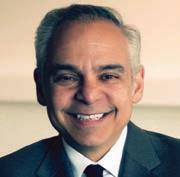
Over the course of his career, Frank Aquila, a senior mergers and acquisitions partner at Sullivan & Cromwell, has worked on deals totaling more than $1 trillion, including advising Biohaven in its $11.6 billion acquisition by Pfizer. As chairman of Brooklyn Law School’s board of trustees since 2019, Aquila has focused on strategic growth. His efforts have included the creation of the Ruth Bader Ginsburg Professor of Law at BLS. Aquila has also refocused the school’s fundraising efforts by creating the role of chief advancement officer. He has been a member of the board of the National Association for Law Placement’s Foundation for Law Career Research and Education since 2005, serving as chair from 2010 to 2012. Aquila is secretary of the board of the American Associates of the National Theatre.

Chair of the board, WhyHunger
Caren Berlin, chief executive officer and co-founder of GNF Marketing, has served on the board of WhyHunger for nearly seven years and currently holds the position of chair. Berlin helps develop strategy and supports efforts to raise the visibility of the organization, diversify funding sources and secure corporate partnerships. She was involved in connecting nearly 1.5 million people to healthy food and essential services in their communities and raising millions in revenue. Berlin also serves as an advisor for FoodnBev Connect, a virtual accelerator and training program for the food and beverage industry, where she works on a pro bono basis with emerging chief executive officers and their teams to provide input on strategy and marketing efforts.
Treasurer and chair of the finance committee, Cluster
Rinku Bhattacharya, chief financial officer for Lutheran Social Services of New York, serves as treasurer and chair of the finance committee for Cluster, an organization that provides services to promote mental wellbeing. Bhattacharya oversees the complex finances of Cluster and has strengthened the organization’s financial position by eliminating loss leaders and presiding over substantial growth. Bhattacharya has also worked to expand Cluster’s signature mediation program and outreach efforts. In addition, she serves on the board and finance committee for the Boys and Girls Club of New Rochelle and is a founding board member of Hudson Valley Youth Robotics, for which she assists with tournaments. In addition, Bhattacharya serves as chair of the performance, oversight and audit committee at the Institute of Management Accountants.

Troy Blackwell
Chairman and chief executive officer, Big Apple Performing Arts
Troy Blackwell is chief executive officer of Big Apple Performing Arts, the nonprofit that manages the NYC Gay Men’s Chorus, among other choirs. In this role, he presides at external meetings, supervises all executive-level staff, appoints committees of the board and provides oversight of the organization’s budget and investment accounts. Blackwell worked to decrease the organization’s deficit by 60%, increased diversity of the board and staff by 50% and negotiated a 20-year partnership with the LGBT Center of NY. He has also advanced his organization’s visibility and its partnerships with civil rights organizations, elected officials and celebrities. In addition, Blackwell is the treasurer for the Diversity Action Alliance, working to accelerate progress in diversity, equity and inclusion in the media and public relations industries.


Eduardo Castell
Secretary, Caring for the Hungry and Homeless of Peekskill

Ellen Bloom, director of community affairs at New York-Presbyterian, focuses on community outreach programs and implements grassroots initiatives. As the secretary of Caring for the Hungry and Homeless of Peekskill, Bloom coordinates all aspects of the nonprofit’s annual Turkey Trot, where admission to run in the one-mile race is donation of a turkey. In 2022, she created messaging for both the community and elected officials, and led work aimed at procuring sponsorships. In part as a result, the race quadrupled the previous year’s revenue, and more than 300 turkeys were donated. Aside from her work with CHHOP, Bloom serves on the boards of local organizations, including the Hudson Valley Gateway Chamber of Commerce, the Yorktown Chamber of Commerce and Woodlands Community Temple.
Chair of development and member of the board of trustees, Hudson River Museum
Elizabeth Bracken-Thompson, a partner at the public relations and communication firm Thompson & Bender, oversees all facets of public relations and advertising for a group of clients comprising businesses, government agencies, institutions within real estate and others. She is also chair of development and a member of the board of trustees of the Hudson River Museum, for which she helped raise more than $11 million to fund a new wing. In 2003, Bracken-Thompson led Westchester Parks Foundation’s strategic planning process as chairman; she continues to contribute not only as a board member, but also as co-chair of the annual fundraising gala, raising hundreds of thousands of dollars annually. She was a founding member of and contributor to the United Way of Westchester’s Women’s Leadership Council.
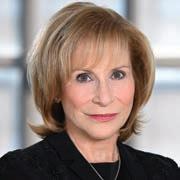
Chairman of the board of directors, Afro Latin Jazz Alliance
Eduardo Castell, a managing partner of the strategic consulting firm MirRam Group, has been chairman of the board of the Afro Latin Jazz Alliance for more than seven years. In this role he has led the cultural organization’s growth from a small nonprofit with a budget of a few hundred thousand dollars to an organization with more than $3 million in yearly revenue. Castell is currently overseeing the development and construction of a theater on Park Avenue, which when completed will have the capacity to seat 300 people. He formerly served as vice chair of the Connecticut College Board of Trustees. Castell is also a director of Math4Science, which exposes kids to STEM careers while helping them enjoy mathematics.
Chris Coffey, a partner and chief executive officer at Tusk Strategies, is board chair of Women in Need, a shelter and supportive housing provider for the homeless. In his role, Coffey ensures that WIN’s clients receive the support they need through after-school programs, income-building classes and other services. Thanks in part to Coffey’s expertise, WIN was at the forefront of the city’s asylum seekers response, pushing for local, state and national policies. Since 2018, Coffey has co-led the nonprofit’s Way to Win Gala, which raises millions of dollars annually for women and children living at WIN’s shelters and other housing. In addition to his work with WIN, he is board chair of the Brooklyn Bridge Park Conservancy and is on the board of The Trevor Project.
Foundation
As board chair, Nancy Coles, an ophthalmologist, celebrates the values of the Paul Taylor Dance Company while leading the fiduciary oversight of the Paul Taylor Dance Foundation. Coles’ fiscal and medical guidance allowed dancers and staff to be paid throughout the pandemic, ensuring all were supported during that tumultuous time. Her strategic vision enabled PTDC to perform at five New York venues in 2022. Additionally, Coles led the launch of the new “Polaris Project,” bringing dance to nearly 2,000 new audience members from the next generation and allowing more people to benefit from the city’s cultural landscape. Aside from her work at PTDF, she has served on the boards of the New York University School of Medicine and Maret School.

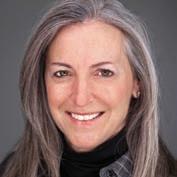


Since 2011, Mary Grace Ferone, who works as disability counsel for Legal Services of the Hudson Valley, has been the chairwoman of Choice of New York, an agency dedicated to helping the homeless, mentally ill, addicted and physically disabled through its offices in Westchester and the Bronx. Over the past 18 months, Ferone headed expansion of services into the criminal justice sector, wherein Choice of New York serves the recently incarcerated and youthful offenders. Aside from her work at that organization, she is a former board member of Careers for People with Disabilities and a former board member of the New York Civil Liberties Union. Additionally, Ferone has mentored community members throughout her career, including executives and board members at Choice of New York.
There
Founder and chief executive officer, Global Fund for Widows
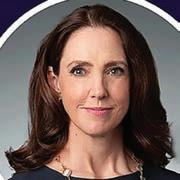
As founder and chief executive officer of Global Fund for Widows, Heather Ibrahim-Leathers leads a global human rights movement to end the exclusion, disinheritance and violent traditional practices that affect 129 million widows worldwide.
Ibrahim-Leathers also works with governments and the United Nations to change the legislation and culture that allow for endemic mistreatment of widows. Most notably, she spearheaded the United Nations General Assembly’s unanimous adoption of the Resolution on Widowhood in March 2022. With IbrahimLeathers’ leadership, GFW has raised millions of dollars for the economic empowerment of widows, helping 26,000 widows in GFW’s programs. In addition, she has influenced American and British foreign policy through her work in the U.S. State Department and in the House of Lords.
Co-chairman of the boards of trustees, Mount Sinai Health System
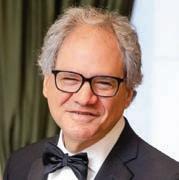
As co-chairman of the boards of trustees for Mount Sinai Health System, Richard Friedman, chairman of asset management at Goldman Sachs, steers the boards’ strategic choices, nurturing trustee collaboration, supervising governance and ensuring adherence to the mission. The impact of the Friedman Brain Institute—which is the result of a substantial gift from the Friedman family—is felt through its pioneering efforts to understand Alzheimer’s, addiction and depression. Under Friedman’s leadership, the institute has uncovered new paths for diagnosis, treatment and prevention. He also provided support for a groundbreaking project that marked the first Alzheimer’s disease genetics cohort for underrepresented Asian Americans.
1.8M
Ashley Garrett, a photographer, has long been a regular presence at the NYC Autism Charter Schools, a pair of charter schools in Harlem and the Bronx catering to students with autism. Now vice president of the board, she is deeply invested in enhancing and furthering the schools’ mission and has been a major financial supporter throughout her dozen years of board service. In recent years, Garrett developed and rolled out a photography program across both schools, which all students were able to participate in. The popular program culminated in a gallery show that raised nearly $30,000 for the two educational institutions. Garrett also serves on several other boards, including the Harvard Business School Fund, the Pipeline Theater Company, Parity Productions and Statement Arts.
Constance Hunter, head of strategy at Corebridge Financial, is board chair of GallopNYC, a nonprofit that offers disabled New Yorkers therapeutic horsemanship programs. Hunter supported GallopNYC’s acquisition of a stable in Forest Hills and played a key role in hiring a new executive director in 2022. In addition, she spearheaded the capital campaign launch for a covered arena at GallopNYC’s Howard Beach stables. Hunter is the former president of the National Association for Business Economics, where she has been recognized as a fellow and serves on the statistics committee. She also holds the certified business economist designation from the National Association for Business Economics, and serves on the board of the National Bureau for Economic Research. Hunter previously held an executive role at AIG.

Over the past 18 months, Patricia Jordan has focused on leading the Emma L. Bowen Community Service Center following the pandemic. The organization was established to help end the stigma associated with mental health care and addiction in the Harlem community by making treatments readily accessible. Recent work has included searching for a new location and creating strategic partnerships that have helped the center expand its reach citywide. In the 1970s, Jordan was a founding member of the Foundation for Minority Interests in Media, an organization that worked extensively with media executives from major television networks to help change negative media portrayals of people of color, as well as to help ensure that young people of color were afforded the same opportunities as others in the field.
Board member, Hot Bread Kitchen
Chaeri Kim Tornay, the assistant general counsel at Amplify Education, serves as a board member of Hot Bread Kitchen, a nonprofit that creates economic opportunities through careers in food. In her roles on the governance committee and as chair of the fund development committee, Kim Tornay formalized board structure and operations and oversaw a large increase in fundraising and revenue. She hosted HBK’s first-ever fundraiser in 2018, and more recently co-chaired the Fete for 15 Benefit, which raised more than $775,000 for the organization. Kim Tornay is currently also a board member of Minds Matter NYC, a mentorship program that helps students from low-income backgrounds succeed at four-year colleges, and previously served on the board of The Diller-Quaile School of Music.

Louis Klein, a managing director at Bridge Investment Group, is board treasurer and co-chair of the finance and investment committee for New Yorkers for Children, a nonprofit working with youth and families in the child welfare system. In his roles this past year, he controlled an annual budget of approximately $7 million, plus $10 million in assets (including an endowment and a reserve fund). In response to the pandemic, Klein was involved in efforts to disperse more than $1.4 million in emergency funds to 2,000 at-risk youth and families in the city. He has also been involved with Network to Success, an annual career development programming event. In addition, Klein regularly volunteers his time with Grassroots Grocery, a Bronx-based food distribution organization.

Marc Z. Kramer, a principal and managing director at Port Media Solutions, is also chairman of the New York Blood Center. At NYBC, Kramer leads general board discussions and provides mentoring, counsel and connections to appropriate resources, while allowing fellow members the autonomy to oversee committee teams. During the pandemic, Kramer spearheaded organization of the blood center’s operations, also maintaining focus on NYBC’s future by supporting investment in life sciences and biotech. In addition to his work with NYBC, he is president of the League of Voluntary Hospitals and Homes of New York. He chaired that organization’s 2019 Care for Kids Gala, an annual event dedicated to improving the lives of 1199SEIU Funds Child Care Corporation members and their children.
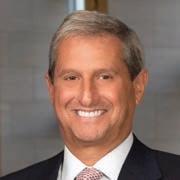
are more than 1.8 million nonprofits in the U.S. (Urban Institute)
Chairman of the board of directors, Westhab


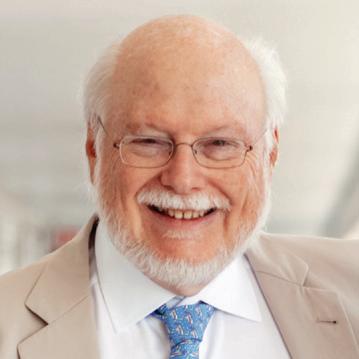
As president and partner at Sirius, a real estate rm, Jesse Krasnow has been involved in negotiating and structuring four co-op and condo conversions involving more than 1,200 apartment units, as well as managing dozens of equity and debt nancings. Such experience bolsters Krasnow in his nonpro t life, where he is board chair of Westhab, whose mission encompasses both the development of affordable housing and provision of social services. In that role, he meets frequently with the Westhab leadership team to offer guidance, while also regularly attending various events, including groundbreakings, ribbon cuttings and staff appreciation programs. Krasnow also devotes resources to causes that help the physically and economically disadvantaged, including American Friends of Ilan, the UJA/Caring Commission and Bet Am Shalom Synagogue.





Tom Krizmanic, principal at global design and architecture rm Gensler, leads project teams for global organizations, including Barclays and various New York clients. Krizmanic also led a 2023 summer intern project to design concepts for Manhattan’s (Former) Colored School No. 4, a recently designated historic landmark. His chairmanship of and contributions to the Manitoga Design Center— which is dedicated to preserving architectural heritage—has been instrumental in creating an award-winning design gallery. Krizmanic is also chair of the New York Landmarks Preservation Foundation, where he has led various fundraising efforts, advocated for the designation of culturally signi cant structures and increased funding for educational programs. He on the board of Publicolor and of the American Institute of Architects.
(independentsector.org)





A partner at Strategy&, Diarra K. Lamar has provided steadfast leadership since assuming the position of chair of the Brooklyn Ballet in 2018. Under his watch, Brooklyn Ballet has experienced signi cant growth, with increased visibility and awareness of the diverse dance company and its mission to provide equitable access to dance. Notably, the organization’s budget has grown 68% since before the pandemic, and the board has doubled in size. Lamar was instrumental in the expansion of Elevate, a program aiming to bring Brooklyn Ballet’s professional dancers into classrooms across 10 Brooklyn public schools as a means of offering free access to dance education. Lamar is an honorary board member of Board Assist and serves as co-chair of the Alvin Ailey Dance Company ambassadors group.

As board chair for Enterprise Community Partners, a nonpro t dedicated to increasing housing supply and advancing racial equity, Rick Lazio—who is a senior vice president at alliantgroup and of counsel at Jones Walker—has helped lead one of the nation’s largest housing nonpro ts in its search for and transition under its incoming CEO. Lazio, who served as a U.S. representative from New York for eight years, helped garner signi cant bipartisan support for the Affordable Housing Credit Improvement Act, which would greatly expand national ability to build and preserve affordable homes. In addition, he helped build a bipartisan coalition on Capitol Hill in favor of policies that would increase the supply of affordable housing.


NOTE WORTHY $16.4B
New Yorkers donate more than $16.4 billion to charity annually, representing nearly 3% of aggregate household income.
ON BEING NAMED AS ONE OF 2023 CRAIN’S NEW YORK NOTABLE NONPROFIT BOARD LEADERS
JOBSFIRSTNYC’S BOARD OF DIRECTORS AND TEAM CONGRATULATE OUR BOARD CHAIR
Alan has been an exemplary longtime leader and champion of the nonprofit sector, who has worked tirelessly towards JobsFirstNYC’s mission to increase and advance economic opportunities for New York City’s young adults and their communities.
In her role as vice president of BlackRock, an investment management company, Rebecca Lewinson is responsible for closing and managing assets under management across the team’s commingled funds and customized separate accounts. Additionally, Lewinson led demand assessment and product design for the team’s first commingled fund in the U.S. and secured early Canadian and South American investors. In 2020, she joined the board of directors of Avenues for Justice—a nonprofit alternative to incarceration program that aids youth with legal matters and provides academic assistance— and co-hosted a job readiness event at a community center. Lewinson also served as global co-chair of the vice president’s network within BlackRock.


Betsy Mallow
Chair of the board, Violence Intervention Program
Betsy Mallow, executive deputy commissioner and chief operating officer for the New York State Division of Housing and Community Renewal, oversees hundreds of people responsible for rent regulation administration and agency operations. As board chair of the Violence Intervention Program, she oversaw a budget increase of 67% and expanded the number of programs to better address trauma and end homelessness, including culturally specific programs for Latinx survivors of domestic and sexual violence. Mallow is leading the development of a major donor program to ensure the organization’s ongoing success, sustainability and impact. She also serves on the board of governors for the Brooklyn Heights Association.
Harsha
Board co-chair, Brooklyn Community Foundation
A managing director at Warburg Pincus, the global private equity firm, Harsha Marti is co-chair of the board of directors of the Brooklyn Community Foundation. In this role, Marti works to ensure that the goals of the board are met, and was a co-leader of the foundation’s recent strategic planning process, which aimed to substantially increase BCF’s reach and to create a new model for local philanthropy. In addition, Marti helped launch a pandemic response fund, the foundation’s largest communitysupported emergency response, distributing millions of dollars to nonprofits across New York. He is also a member of the law board of the Northwestern Pritzker School of Law and was a board member of South Asian Youth Action from 2005 to 2011.

1.4M
Nancy Mertzel, a managing partner at Mertzel Law, is the president of Women Owned Law, an organization that empowers women to succeed in the legal field. Under her leadership, the organization transitioned its management, streamlined operations, increased sponsorships and refined its mission; it is now positioned for growth and enhanced stature in the legal ecosystem, thanks to its emphasis on diversity in the law.
Mertzel also serves as co-chair of the legal industry council of the National Gay & Lesbian Chamber of Commerce, the largest advocacy organization dedicated to expanding economic advancements for members of the LGBTQIA+ community. Previously, Mertzel served as director of the American Intellectual Property Law Association.





Mark Miller, a co-founder of the exchange-traded funds issuer BondBloxx, serves on the board of Part of the Solution, a nonprofit that fights poverty and hunger in the Bronx. A board member since 2003, he chaired it from 2012 until 2022. He also helped the board expand from solely a soup kitchen to a provider of a multitude of services for low-income New Yorkers. As part of those efforts, Miller spearheaded the capital campaign that funded a new building for Part of the Solution, which resulted in more dignified experiences in its food pantry and dining room. In addition to his work with Part of the Solution, Miller is an advisory board member of Shatterproof, a nonprofit dedicated to transforming addiction treatment and ending stigma.
Nonprofit organizations employ more than 1.4 million New Yorkers, or 17.8% of all private employees. (New York Council of Nonprofits)
Chairman of the board of directors, JobsFirstNYC
Alan Momeyer, Loews Corporation’s retired chief human resource officer, is chairman of the board of directors of JobsFirstNYC, a nonprofit committed to breaking barriers and transforming systems supporting young adults and their communities in pursuit of economic mobility. Since joining the board in 2007, and becoming chair in 2013, Momeyer has worked to improve the organization, increasing staff capacity by 30% and financial support to partners in underserved communities across the city by 34%. Over the past 18 months, Momeyer played a key role in financially strengthening the organization via a budget increase to more than $4 million. He is also the former chairman of the board of directors of Community Access and of Inside Broadway, and serves on the board of Auguste Escoffier School of Culinary Arts.
Chairman of the board, Part of the Solution
Keith Pagnani, a partner in the mergers and acquisitions group at the law firm Sullivan & Cromwell and co-head of the firm’s healthcare and life sciences group, has been chairman of the board of Part of the Solution since 2022. In that role, Pagnani leads the community organization’s board in formulating and promoting strategic initiatives while serving as an ambassador for the organization within his network. He has worked on efforts toward allying POTS with other nonprofits to add career training services. Pagnani also organized the annual fundraiser Thanksgiving POTS Gobbler Cup Golf Tournament, raising a significant amount of money for the organization. A member of the Practicing Law Institute, Pagnani is a frequent public speaker on issues related to mergers and acquisition.
Steve Perazzoli
Chairman of the board, Education and Research Foundation of the Better Business Bureau of Metropolitan New York
Steve Perazzoli is chairman of the board for the Education and Research Foundation of the Better Business Bureau of Metropolitan New York, an organization that reaches more than 700 charities in lower New York state with education, programs and information. In addition, Perazzoli is on the board of trustees for the Expect Miracles Foundation. He boasts more than 26 years of diverse experience servicing a global and multidisciplinary client base, and is currently a trust solutions assurance partner with PricewaterhouseCoopers. At the professional services giant, Perazzoli is responsible for the oversight of employee benefit plan audits and related services, practice and risk management, training, and regulatory relations.
Chairman of the board, LiveOnNY
Lee H. Perlman has served as a board member for LiveOnNY, a nonprofit focused on organ and tissue donation, for 15 years. He was named chairman of the board in 2019. With a background in healthcare leadership, Perlman is skilled at navigating the evolving logistics of the organ donation system. In 2022, the organization had a record-breaking year with 1,300 organs transplanted, a 30% increase in organs transplanted to those on the national wait list. In addition to his work with LiveOnNY, Perlman is president of the Greater New York Hospital Association Management Corporation, as well as executive vice president and chief administrative and financial officer of GNYHA. He also serves on the board of the Ronald McDonald House of New York.


Vice chair, City Harvest
Eric Ripert, chef and co-owner at the restaurant Le Bernardin, has been working with City Harvest, New York’s largest food rescue organization, for nearly 30 years. Ripert now serves as vice chairman of the board for City Harvest and as a member of its food council, working to bring together New York’s top chefs to raise funds and increase awareness of the organization’s work. His fundraising efforts have generated enough to feed more than 18 million New Yorkers. At the start of the pandemic, Ripert and his wife volunteered with City Harvest, distributing fresh produce to Bronx residents. Annually, Ripert donates enough food to feed nearly 9,000 impoverished families, and his restaurant offers a year-round prix fixe menu which raises funds for City Harvest.
Board chair, Global Kids








Richard Roberts has served as chair of Global Kids’ board of directors for 12 years. He has worked to advance the nonpro t’s mission of educating, activating and inspiring youth from underserved communities to take action on critical issues, and helping them become the next generation of leaders.


Roberts created Global Kids’ inaugural Golf Classic in 2022, with the aim of raising funds from supporters and building awareness of the organization. In addition to his work with Global Kids, he serves as chair of the board for several other organizations, including Citizen’s Housing and Planning Council, The Community Preservation Corporation and Camba. Roberts is also an adjunct professor in the Mount Sinai School of Public Health, where he has taught about community health for several years.

David M. Rottkamp is a nonpro t practice leader and partner at Grassi Advisors & Accountants, where he participates with the Grassi Gives Back program to send volunteers to local charities. He has also served on the National Multiple Sclerosis Society board for 11 years and its New York City/Long Island Chapter for 17 years, where he is now serving a second term as board chair. Active in fundraising efforts, Rottkamp has raised more than $200,000 for the National Multiple Sclerosis Society in the Walk MS and Runway for MS events. He also spearheaded an emerging leaders board to support and mentor younger board members for the organization. Rottkamp also sits on the boards of the New York Council of Nonpro ts and BoardStrong.
Chief executive of cer, New York Foundation for the Arts


Michael Royce is chief executive of cer of the New York Foundation for the Arts, a Manhattan-based nonpro t focused on serving artists, arts administrators and arts organizations across the country. Throughout his career, Royce has worked to help various marginalized groups within the arts community. In 2020, he raised more than $20 million in emergency funding for artists and cultural workers in response to economic losses resulting from the pandemic. Royce also sits on the board of ArtBridge, which works with the city Department of Cultural Affairs, the Department of Buildings and the Of ce of the Mayor. ArtBridge aims to create diverse exhibitions on construction fencing, with an emphasis on those that impact New Yorkers who are living in New York City Housing Authority buildings.
Chairman of the board, The New 42nd Street
Fiona Rudin is a producer, investor and co-founding partner of P3 Productions, which is dedicated to building productions from the ground up while uplifting new voices and communities. Outside of her professional role, she has served as chairman of the board for The New 42nd Street since 2012; she has been on the board of directors since 2004. The New 42nd Street is a leading performing arts nonpro t with the mission of making extraordinary performing arts a part of all people’s lives, from the early years of childhood into adulthood and beyond. Rudin has advocated for the organization with leaders in the spheres of nance, real estate, politics, culture and philanthropy. In addition, she serves on the board of trustees of Harlem Village Academies.
NOTE WORTHY
TOP 10 New York City ranks among the top 10 cities for giving in six of eight charitable sectors; New York ranked second in society bene t, third in international affairs and fourth in education.
( delitycharitable.org)
Executive director, Women Builders Council
Renee Sacks is president and chief executive officer of Sacks Communications. She also serves as executive director of Women Builders Council, a nonprofit representing women in the construction industry. Recognizing the need for a new generation of leaders, Sacks developed an ambassadors council designed to create a pipeline for new talent and leadership, both for the organization and for the construction industry generally. She developed the organization’s program for Outstanding and Next Generation Women, which has recognized more than 900 women since 2014. As part of her professional service, Sacks leads the Ascend Regional Program NY-NJ-LI, a market access program for minority- and womenowned business enterprises and part of the National Ascend Cities program.
Co-chair of the board of directors, The New Jewish Home

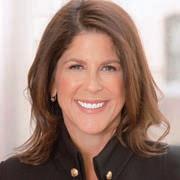
Tami Schneider serves as co-chair of the board of directors of The New Jewish Home, a comprehensive health care system providing older adults with health and rehabilitation care. With Schneider’s leadership and capital campaigning, The New Jewish Home has been able to effectively respond to the needs of older New Yorkers while facing economic challenges stemming from rising costs of care delivery in a post-pandemic landscape. She is founder and organizer of TNJH’s “Eight Over Eighty” Gala, which has raised millions to support the nonprofit’s services. Schneider is also founder of Lost & Found, a support network for widows and widowers who have lost partners to cancer. Now in its eleventh year, Lost & Found meets eight times annually and has more than 300 members.
After watching his father battle a glioblastoma, Michael Schreiber grew determined to help brain tumor patients and their families. Today, he is president of the Brain Tumor Foundation. Begun as a pilot program in New York, the organization is now a nationally recognized research project that partners with NewYorkPresbyterian, Weill Cornell and Columbia University Medical Center. As chairman of the board, he helps enhance programs, fundraises and works to develop programmatic strategies while offering support and encourage-ment. Schneider has broadened the scope of board involvement and financial development and helped build alliances for the Brain Tumor Foundation. He is also president of Royal Farms, a real estate management firm.
Bart Schwartz was elected president of the Police Athletic League of New York City in 2023. The nonprofit works with the New York Police Department to inspire city youth to reach their full potential as productive members of society. Schwartz worked with other professionals to formalize the organization’s 11-year partnership with the NYPD in a police-community relations program. He is also a founding board member of the International Association of Independent Corporate Monitors and an advisory board member of the Amazing Care Charitable Foundation, a nonprofit dedicated to educational, clinical and care-giving support for financially distressed seniors. Schwartz is also chairman of Guidepost Solutions, a leader in compliance solutions, monitoring, and security and technology consulting.
A professional broker, Nan Shipley is founder of Shipley Realty, where she works as both a listing and sales agent in a role that includes marketing and networking. She is also chair of the board for the nonprofit Food Education Fund. Shipley has contributed to the latter organization’s growth, increasing the budget from $200,000 to $2 million and securing corporate partnerships with several major corporations, enabling 860 students to participate in the organization’s programming. Shipley’s efforts have greatly increased exposure for the Food Education Fund and have allowed more New York public high school students to access experiential culinary and hospitality learning. She is also co-founder of Future of Food.

Board chair, A.I.M by Kyle Abraham
Stephen Simcock has served as board chair since 2015 for A.I.M. by Kyle Abraham, a nonprofit with the mission of creating a body of dance-based work galvanized by Black culture and history. He has advanced the nonprofit’s cause by hosting numerous events and allowing a broad audience to experience the mission. Simcock’s success as a fundraiser and negotiator has allowed the organization to provide dancers with 52-week contracts and salaries, retirement plans and health benefits on par with larger and more established dance companies. He was honored in 2022 with the New York Out & Proud Corporate Counsel Award, which is given to legal professionals who promote LGBTQIA+ equality to create more welcoming workplaces. Simcock is vice chairman of JP Morgan Chase & Co’s legal department.
Martin Siroka
Vice president of the board of trustees, Jewish Association
Serving the Aging
Martin Siroka is vice president of the board of trustees for the nonprofit Jewish Association



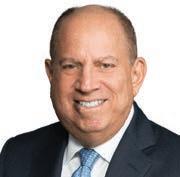

Serving the Aging, where he has been a trustee since 2007.
Providing senior affordable housing in New York, JASA operates 11 affordable housing properties with more than 2,400 elderly and disabled residents. Under Siroka’s leadership, the agency undertook its first new construction project in many years, providing necessary affordable housing options for New York’s elderly. He has also advised on innovative refinancings of a portion of the organization’s housing portfolio. Siroka is senior counsel at the law firm Katten Muchin Rosenman and holds extensive experience in structured financing, affordable housing transactions and mortgage insurance. He has also served on the advisory board of the New York Housing Conference.
Board chair, Hunger Free America
Hunger Free America is a national nonpartisan nonprofit dedicated to ending hunger in the U.S. through direct service and policy advocacy. As board chair, Michael Stoller is responsible for leading development, advancing fundraising, providing fiscal guidance, motivating other members and supporting organizational growth. He is currently helping the nonprofit develop a strategy to expand beyond New York and into Washington D.C., so as to expand critical federal advocacy efforts. Stoller was previously chief operating officer of the Metropolitan Council on Jewish Poverty, a Manhattan-based organization that serves impoverished individuals, immigrants and the unemployed regardless of racial, ethnic or religious background. He also served as executive director of the Human Services Council of New York for more than a decade.
Scott Stuart
Chair of the board, Memorial Sloan Kettering Cancer Center
Scott Stuart is chair of the board for the Memorial Sloan Kettering Cancer Center, a nonprofit health center with the mission of ending cancer by conducting research and providing personalized care for patients of all ages. Stuart, who is also a founding partner at the private investment firm Sageview Capital, oversees management and finances while guiding the organization’s annual priorities and strategies. Under his leadership, MSK has been named one of the top two cancer centers in the country by U.S. News & World Report in both 2022 and 2023. In 2022, the center raised more than $569 million for cancer care, research and education. Stuart has also helped MSK expand access to cancer care by widening its reach across the city.

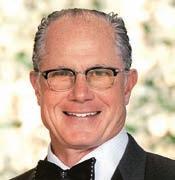
Travis Terry
Board president, Friends of the QueensWay
Travis Terry has been an adviser to corporate and nonprofit organizations across New York for more than a decade, including UPS, Macy’s, AMC Networks and the Guggenheim Museum. As president of the urban strategy firm Capalino, he has helped create public parks, raise hundreds of millions of dollars in public-sector funding, and secure project approvals for major land-use projects. Terry serves as board president of Friends of the QueensWay, a nonprofit aiming to convert long-abandoned property in Queens into public land. Notably, he has generated support from elected officials and navigated complicated approvals for the organization. Terry is a board member of the Association for a Better New York, a nonprofit dedicated to the growth and renewal of the city’s businesses and communities.
Microsoft co-founder Bill Gates was the most charitable American in 2022, giving $5.1 billion to the Bill & Melinda Gates Foundation. (Fortune.com)
Wray Thorn is partner and founder of Focus Impact Partners, a private investment firm aiming to amplify social impact and generate meaningful profits. For more than 15 years he has also been involved with Youth INC, a nonprofit that works to empower more than 175 grassroots nonprofits serving New York youth. Thorn, a member of the strategic planning committee, has been co-chair of the board for four years. During his tenure at the organization, he has been involved in efforts toward raising more than $100 million. He has also helped to diversify the board, increasing Black and indigenous representation significantly.
Thorn founded Focus Impact and Two Sigma Impact, impact investment businesses devoted to a double-bottom-line approach to private investing and positive impact.
With experience from past senior level roles in media, entertainment and technology at various companies, Kimberly Till is involved in a portfolio of activities that include board service, consulting and new venture launches. She is chair and board member of Getting Out & Staying Out, as well as a board member for USA Gymnastics. Getting Out & Staying Out is a nonprofit that partners with people affected by arrest and incarceration toward a journey of education, employment and wellbeing. The organization also collaborates with New York communities to support a culture of nonviolence. Till leads GOSO in navigating challenges, expanding its network and working effectively with stakeholders. At USA Gymnastics, she’s been part of a significant turnaround following the scandal involving former physician Larry Nassar.

Co-chairman of the boards of trustees, Mount Sinai Health System
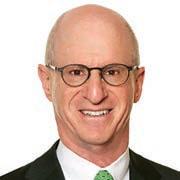 Arleen Zuckerman
Arleen Zuckerman
Chair, Transportation Resources Access
(Giving USA 2023 Report via doublethedonation.com)

James Tisch, chief executive officer of Loews Corporation, is co-chairman of the boards of trustees for Mount Sinai Health System and sits on the board of the New York Public Library. His guidance of and donation to Mount Sinai Hospital’s Tisch Cancer Hospital is helping to transform oncology care, expanding access to life-saving breakthroughs and promoting Mount Sinai as a leader in cancer treatment and research. Established in 2022, the Tisch Cancer Center includes the Tisch Cancer Hospital, the Tisch Cancer Institute at Icahn Mount Sinai and a growing ambulatory cancer network. Tisch is funding a partnership with the New York Public Library to support telehealth access and enhance digital literacy skills.
Arleen Zuckerman, a volunteer driver for Transportation Resources Access since 2015, has been an officer on its board since 2016 and currently serves as chair. TRA is a nonprofit that provides medical rides and resource information to adults with low vision, adults over age 60 and adults with disabilities. As chair, Zuckerman is responsible for guiding the organization in setting strategic goals and making informed decisions aligned with the organization’s mission. After retiring from her role as an administrative manager and researcher at McKinsey & Company, Zuckerman founded New Rochelle Cares, an aging-inplace organization, and has since served as its president. She is president of the nonprofit New Rochelle Cares and previously served on the board of Meals on Wheels of New Rochelle.
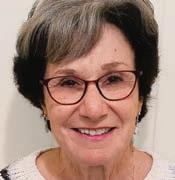

Liz’s commitment to making a positive impact in Westchester through her dedicated service to nonprofit boards and organizations is a shining example of what it means to be a leader in business and beyond.
Her willingness to dedicate time, expertise and resources to numerous nonprofit boards and advisory roles demonstrates her deep commitment to the local community. Through her leadership she has helped many organizations thrive and achieve their missions.
Liz’s efforts, passion and dedication inspire us all to do more, give more, and be more for the causes we hold dear. Well done!
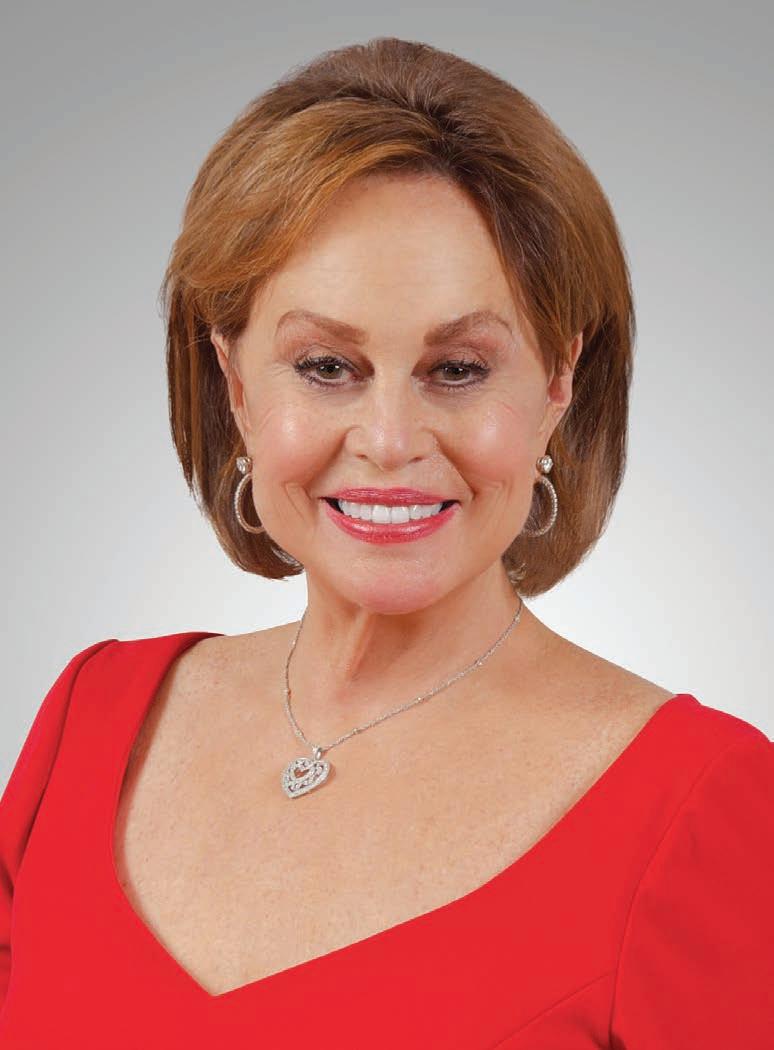
The state is officially moving forward with plans to turn a former Chelsea prison into an affordable housing complex.
Empire State Development, New York’s economic development agency, released a request for proposals late last month for a group to purchase and redevelop the vacant Bayview Correctional Facility at 550 W. 20th St., right by 11th Avenue. All ideas will need to include a minimum of 60 supportive housing units and 15 short-term transitional residences for the homeless.
Projects should include permanent affordable housing and space for community facilities as well. The state also wants a nonprofit to own at least 51% of the building, meaning any team that submits a proposal will need to include a nonprofit organization.
The property, which spans more than 100,000 square feet, was built in 1931 and originally used as a YMCA. It then served as a rehab center from 1967 to 1974,
The state wants a nonprofit to own at least 51% of the building.
at which point it was transferred to the state’s Department of Correctional Services and became a medium-security prison and work-release facility for women. The site closed in October 2012 after flooding from Superstorm Sandy and has been vacant ever since.
The state previously issued RFPs to redevelop the site in 2013
and 2014, but both were canceled, as the respondents could not deliver on their proposals and withdrew, according to Empire State Development.
The state will conduct a site visit for interested applicants Oct. 18, and questions about the RFP must be submitted by Oct. 20. Submissions are due by Dec. 13 at 5 p.m. Officials have not yet determined when they will announce the winner.
Gov. Kathy Hochul announced in July that she was requiring all state agencies to review their property holdings to determine if they could be used for housing, part of her package of executive actions meant to spur housing growth after the collapse of a broader legislative deal. However, the effort to turn Bayview into an affordable housing complex predates that announcement, with one Empire State Development official saying at a public meeting in the summer of 2022 that the agency would consider converting it into a residential property.
Lincoln facility
The Hochul administration also issued an RFP in March to turn the shuttered Lincoln Correctional Facility across from Central Park in Harlem into an affordable housing complex. Proposals were due May 23, and the state expects to announce a winner soon.
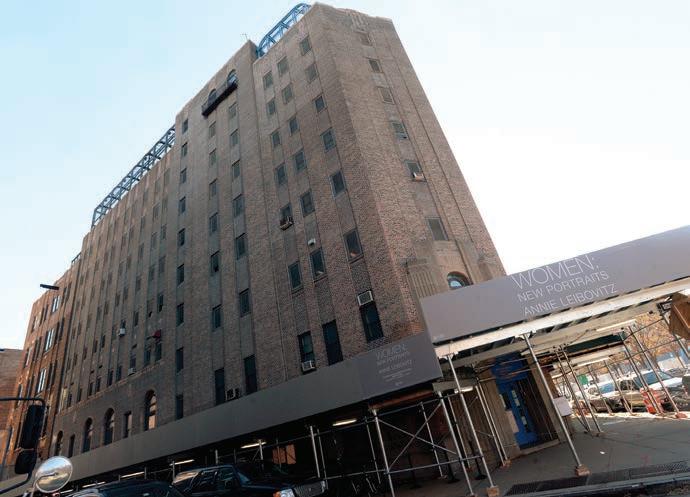
New York energy officials are calling for recommendations on how to best prioritize at least $150 million in funds to build out the offshore wind sector.
A new request for information from the New York State Energy Research and Development Authority, published last month, invites feedback from the offshore wind industry on supply chain infrastructure needs. NYSERDA said it is looking to focus on port development, manufacturing and raw material production, such as steel, concrete and carbon fiber.
“As offshore wind generation projects are built, the offshore wind supply chain is vital to securing successful projects that deliver timely and cost-effective results, while also benefiting New York’s workforce, businesses, and the transition to a clean energy economy,” the request states.
Meatpacking District-based real estate investment firm Churchill Real Estate has parted ways with an office building it developed near Penn Station four years ago. The company, which spent approximately $90 million to develop the six-story property at 263 W. 34th St. in 2019, let go of it as part of a foreclosure action started by creditor Marathon Asset Management in 2021.

Marathon took over the property from Churchill last month, when it bid $16.5 million for it at a foreclosure auction Sept. 20, according to documents filed with the New York County Supreme Court. The site had approximately $65 million in liens as of May 19, when state Supreme Court judge Jennifer Schecter approved the sale of the building.
The property, which totals 35,165 square feet and sits on a lot totaling 0.1 acres, was 81% leased as of Sept. 25, according to real estate research firm CoStar. Tenants include telecom firm Poly and MRI provider Kolb Radiology.
The sale was first reported in The Real Deal.
The information will help NYSERDA develop a full-blown request for proposals for its investment plan.
State energy officials say they aim to make between $150 million and $450 million available for supply chain investments through the upcoming bid for projects. The goal is for those undertakings to be at least partially operational by 2028.
Upcoming proposals can be
submitted as stand-alone projects or as a cohort and would need to seek a minimum award of at least $25 million. Officials said the state funds could account for up to 33% of a project’s estimated price tag.
Oct.
Before that can unfold NYSERDA wants developers to answer questions on time frame requirements, investment targets and funding agreements. The due date
for the request for information is Oct. 20 at 3 p.m. Eastern Time.
The state energy authority is getting the ball rolling on new supply chain investments as energy developers wait to hear which projects NYSERDA will advance for its latest offshore wind solicitation later this year. At the same time, existing offshore wind projects contracted with the agency are seeking more money due in large part to supply chain challenges.

Marathon initiated a foreclosure action in 2021, when it alleged Churchill had defaulted on a series of loans totaling $52 million. The building became distressed shortly after pharmaceutical firm Merck backed out of a six-floor lease and shortly after the onset of the pandemic.
It remains unclear what Marathon intends to do with the property. The company and Churchill did not return a request for comment by press time.
million
build
A request for information invites feedback from the industry on supply chain infrastructure needs.
“Tech in New York City feels super optimistic right now,” said Julie Samuels, founder and president of Tech:NYC, which acts as a booster for local tech firms. “Obviously the industry has faced some headwinds—you’ve seen that internationally—but it feels like we’ve really navigated that quite well.”
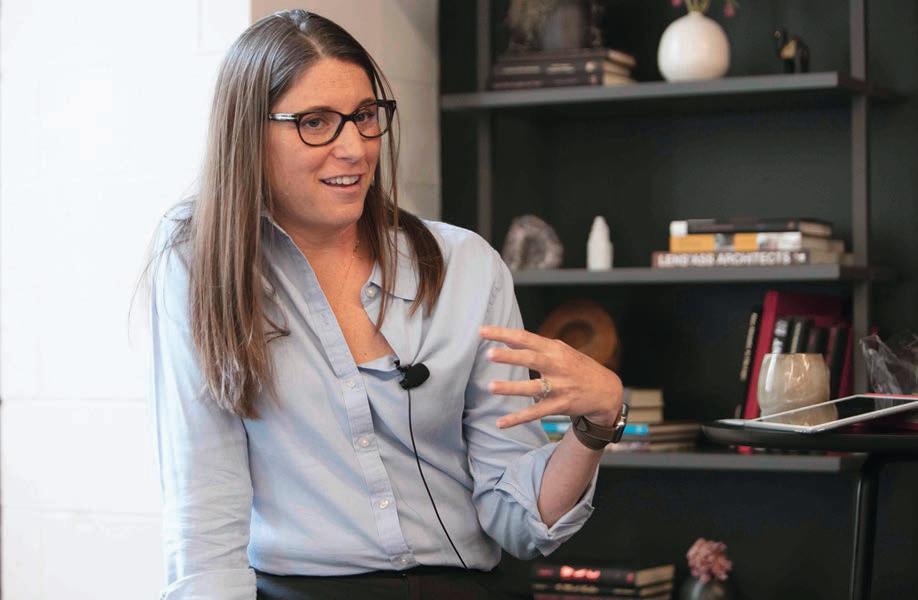
Perhaps New York’s biggest selling point when it comes to the state of tech is its abundance of talent. There are now more than 370,000 tech workers across New York, according to the latest data from real estate firm CBRE. That means there are more jobs in tech than on Wall Street.
“The city is benefiting a lot from the exodus from San Francisco,” said Jordan Fliegel, managing director at TechStars NYC, one of the industry’s leading local accelerators. “It might not be as good as tax-free startup places like Austin, Texas, and to a lesser extent Miami, but New York is already a top two or three tech hub in the country and is moving to No. 1.”
It’s not just out-of-town talent. New York is now producing a tech workforce of its own.
“We are just doing a much better job of spinning up tech talent locally,” Samuels said. “The tech sector here has really doubled down on supporting workforce development efforts, supporting computer science education in schools, and we’re really starting to see that investment pay off.”
There’s perhaps no better example of that than the Cornell Tech campus on Roosevelt Island. The school launched in 2012 as a collaboration between the Mayor Michael Bloomberg
Employers continue to look to hire cloud systems, security, artificial intelligence and data technology professionals in 2023.
Percentage of respondents prioritizing hiring tech employees with the following expertise:

administration, Cornell University and the Technion–Israel Institute of Technology and almost immediately began producing homegrown tech talent.
Industry leaders have long believed that if a startup wanted to be taken seriously, it had to be in Silicon Valley. A Manhattan office could come second, but home base for a U.S. firm had to be California. That belief has faded in recent years, and much of that has to do with New York’s people.
A survey published today from Tech:NYC and Accenture, “Tech Talent Hiring Trends Survey,” shows that company leaders are overwhelmingly optimistic about tech talent in New York. Ninety-nine percent of employers surveyed this past summer said they are confident in their ability to secure needed tech skills in 2023 from the talent pool in the city. The survey included 350 C-level executives working across 11 industries for organizations with at least one work location in the city.
That confidence is breeding growth. This past winter, New York edged out Silicon Valley with the most early-stage startups in the U.S., according to equity manage-
ment platform Carta. There are now more than 25,000 tech startups in the region, and Google is expanding its New York footprint.
While employees and employers alike are bullish on tech in New York, the industry is far from immune to the dry-up of venture capital activity across the economy. Investments are down in nearly every sector, and tech has been hit harder than most.
VC activity peaked in 2021 with roughly $55.8 billion flowing to New York-area startups, according to data provided by PitchBook.
Software firms were on the receiving end of nearly half of that. Then VC activity began to dip in 2022, and the city’s overall VC investment fell to $34.7 billion, PitchBook reported. Still, about 50% of VC funding went to tech firms.
Now, at the close of the third quarter of 2023, investment to date looks bleak for both the city writ large and tech in particular. City startups have seen $14.3 billion in funding rounds thus far; for tech firms, that number is just $5.5 billion.
“The narrative of 2021 was that capital was really just falling out of the sky, there was more capital to be put to work from investors than startups even needed,” said PitchBook VC analyst Vincent Harrison. Investors were more willing to back a pre-product tech company in favor of growth potential, he said. Now, the focus has switched to profitability and cash flow.
“That has obviously shifted dramatically, and there is now a lot more capital that startups need than investors are able to supply,” Harrison said. “These software companies are not able to rely on just growth prospects when they are seeking out investments.”
Much of that remaining investment is being directed toward the development of AI, which has managed to buck the slowdown in deal activity. There were 26 deals that totaled $565 million in the first quarter of 2023 alone, according to an analysis from Deloitte. The analysis showed that climate tech and health care tech firms continue to fundraise relatively well.
“If you’re building in AI or health care or a few other categories, it’s hot,” Fliegel said. “For everyone else, it’s certainly down compared to the first half of last year and way down from the year prior. But those were like the greatest years ever, so it’s still a relatively healthy correction.”
The people interviewed for this story were uncertain about the immediate future. No one wanted to make predictions. One big question, it seems, is whether AI will be more like crypto—fast growth then a crash—or more sustainable like the dot-com boom. Also, there are a lot of questions around venture capital.
“AI, large language models, everything around that are super hot,” Fliegel said. “VCs are throwing money at that pre-product, pre-revenue.”
“We are just doing a much better job of spinning up tech talent locally.”
Julie Samuels, founder and president of Tech:NYC
Data Mgmt Technical Analyst (Citadel Enterprise Americas Services LLC –New York, NY); Mult. pos. avail. Leverage innovative techs to streamline ops & create new data flows by conduct’g analytics & automation work. Perform data analysis by building scripts & dashboards to surface critical metrics & KPI. Offering a salary range of $110,000 to $175,000 per year. F/T. Apply w/ resume to citadelrecruitment@citadel.com. Ref. Job ID: 7113638.
Mobileye, Inc. has an opening in New York, NY for VLSI Backend Engineer: Prepares specifications and analyzes test reports. Ensures products conform to standards and specifications. Bach degree plus 5 yrs exp reqd. Telecomutng is permissibl. $170,000-$200,000 per year. To apply, email Alice Choi at Alice.Choi@mobileye.com & ref job #453146
Mobileye, Inc. has an opening in New York, NY for VLSI Backend Engineer: Prepares specifications and analyzes test reports. Ensures products conform to standards and specifications. Bach degree plus 5 yrs exp reqd. Telecomutng is permissibl. $170,000-$200,000 per year. To apply, email Alice Choi at Alice.Choi@mobileye.com & ref job #439213.
Notice of Formation of BROOKPARK STRATEGIES LLC. Arts of Org. filed with Secy. of State of NY ( SSNY) on 4/1623. Office Location: NY County. SSNY designated as agent of LLC upon who process against it may be served. SSNY shall mail process to: 1763 2nd Ave, Ste 18P. NY, NY 10128. Purpose: any lawful activity
Notice of Formation of LOUIS L. SHAPIRO LLC
Arts. of Org. filed with Secy. of State of NY (SSNY) on 08/10/22. Office location: NY County. SSNY designated as agent of LLC upon whom process against it may be served. SSNY shall mail process to c/o Corporation Service Co., 80 State St., Albany, NY 12207-2543, regd. agent upon whom and at which process may be served.
Purpose: Any lawful activity.
Notice of Formation of FWLG LLC
Arts. of Org. filed with Secy. of State of NY (SSNY) on 09/05/23. Office location: NY County. SSNY designated as agent of LLC upon whom process against it may be served. SSNY shall mail process to Cohen & Cohen, LLP, 122 E. 42nd St., 4th Fl., NY, NY 10168.
Purpose: Any lawful activity.
Notice of Formation of NN VALLEY HOLDINGS LLC, Arts. of Org. filed with Secy of State of NY (SSNY) on 5/24/23. Office: NY County. SSNY designated as agent of the LLC upon whom process against it may be served. SSNY shall mail copy of process to the LLC, 232 ELIZABETH ST. UNIT 6A, New York, NY 10012.
Purpose: Any lawful purpose.
Notice of Qualification of GENIUS & POISON LLC
Appl. for Auth. filed with Secy. of State of NY (SSNY) on 09/05/23.
Office location: NY County. LLC formed in Delaware (DE) on 08/29/23. SSNY designated as agent of LLC upon whom process against it may be served. SSNY shall mail process to c/o Corporation Service Co., 80 State St., Albany, NY 12207-2543. DE addr. of LLC: 251 Little Falls Dr., Wilmington, DE 19808. Cert. of Form. filed with Secy. of State, PO Box 898, Dover, DE 19903.
Purpose: Any lawful activity.
Notice of Qualification of RGNMCA PORT JERVIS I, LLC

Appl. for Auth. filed with Secy. of State of NY (SSNY) on 09/26/23.
Office location: NY County. LLC formed in Delaware (DE) on 09/25/23. SSNY designated as agent of LLC upon whom process against it may be served. SSNY shall mail process to Corporation Service Co., 80 State St., Albany, NY 12207-2543. DE addr. of LLC: 251 Little Falls Dr., Wilmington, DE 19808. Cert. of Form. filed with Secy. of State, 401 Federal St., Ste. 4, Dover, DE 19901. Purpose: Any lawful activity.
I THINK IN SPACES LLC. Arts. of Org. filed with the SSNY on 1/6/23. Office: BRONX County. SSNY designated as agent of the LLC upon whom process against it may be served. SSNY shall mail copy of process to the LLC, 4440 Baychester Ave., 1st Floor, Bronx, NY 10466
Purpose: Any lawful purpose.
Notice of Formation of TWELVE BAR, LLC
Arts. of Org. filed with Secy. of State of NY (SSNY) on 12/14/21. Office location: NY County. Princ. office of LLC: 930 High St., Fairfield, CT 06824. SSNY designated as agent of LLC upon whom process against it may be served. SSNY shall mail process to the LLC at the addr. of its princ. office. Purpose: Any lawful activity.
Notice of Formation of OUCHA, LLC. Arts of Org filed with Secy. of State of NY (SSNY) on 9/19/23. Office Location: NY County. SSNY designated as agent upon whom process may be served and shall mail copy of process against to ; 101 West 24th Street Apt 21A, NY, NY 10011.
Purpose: any lawful act.
Banana Bean Productions LLC filed Arts. of Org. with the Sect'y of State of NY (SSNY) on 9/14/2023. Office: New York County. SSNY has been designated as agent of the LLC upon whom process against it may be served and shall mail process to: The LLC, 10 Liberty St, Apt 27G, NY, NY 10005. Purpose: any lawful act.
MATTHEW EVAN ROTH, Ph.D., PSYCHOLOGY, PLLC filed Arts. of Org. with the Sect'y of State of NY (SSNY) on 8/18/2023. Office: New York County. SSNY has been designated as agent of the LLC upon whom process against it may be served and shall mail process to: Matthew Evan Roth, Ph.D, 315 Gates Ave, Apt 1B, Brooklyn, NY 11216. Purpose: Psychology.
Notice of formation of Limited Liability Company. Name: West 48 Owner LLC (“LLC”). Articles of Organization filed with the Secretary of State of the State of New York (“SSNY”) on July 24, 2023. NY office location: New York County. The SSNY has been designated as agent of the LLC upon whom process against it may be served. The SSNY shall mail a copy of any process to The Limited Liability Company, 7 Penn Plaza, Suite 600, New York, NY 10001. Purpose/character of LLC is to engage in any lawful act or activity.
Notice of Qualification of SANDY 350 DE SPE LLC
Appl. for Auth. filed with Secy. of State of NY (SSNY) on 09/25/23. Office location: NY County. LLC formed in Delaware (DE) on 09/15/23. SSNY designated as agent of LLC upon whom process against it may be served. SSNY shall mail process to Corporation Service Co., 80 State St., Albany, NY 12207-2543. DE addr. of LLC: 251 Little Falls Dr., Wilmington, DE 19808. Cert. of Form. filed with Secy. of State, 401 Federal St., #4, Dover, DE 19901. Purpose: Any lawful activity.
Notice of Formation of MHR
CONSULTING SERVICES LLC
Arts. of Org. filed with Secy. of State of NY (SSNY) on 09/28/23. Office location: NY County. Princ. office of LLC: 39 Fifth Ave., Apt. 4C, NY, NY 10003. SSNY designated as agent of LLC upon whom process against it may be served. SSNY shall mail process to Corporation Service Co., 80 State St., Albany, NY 12207-2543.
Purpose: Any lawful activity
Notice of Formation of TRESS XPRESS LLC Arts of Org filed with Secy. of State of NY (SSNY) on 3/30/2023. Office
Location: NY County. SSNY designated as agent upon whom process may be served and shall mail copy of process against to 2266 Fifth Avenue, Unit #584, NY, NY 10037.
Purpose: any lawful act.
Aquarian Productions, LLC filed Arts. of Org. with the Sect'y of State of NY (SSNY) on 8/4/2023. Office: New York County. SSNY has been designated as agent of the LLC upon whom process against it may be served and shall mail process to: c/o The LLC, 186 Pinehurst Ave, NY, NY 10033.
Purpose: any lawful act.
Notice of Formation of MAIALE LLC
Arts. of Org. filed with Secy. of State of NY (SSNY) on 08/16/23. Office location: NY County. Princ. office of LLC: 37 W. 21st St., Apt. 1106, NY, NY 10010. SSNY designated as agent of LLC upon whom process against it may be served. SSNY shall mail process to Corporation Service Co., 80 State St., Albany, NY 12207-2543.
Purpose: Any lawful activity.
Notice of formation of Limited Liability Company. Name: DD ECF West 48 JV LLC (“LLC”). Articles of Organization filed with the Secretary of State of the State of New York (“SSNY”) on July 24, 2023. NY office location: New York County. The SSNY has been designated as agent of the LLC upon whom process against it may be served. The SSNY shall mail a copy of any process to The Limited Liability Company, 7 Penn Plaza, Suite 600, New York, NY 10001. Purpose/character of LLC is to engage in any lawful act or activity.
Notice of Qualification of SHERMAN TIGER LLC
Appl. for Auth. filed with Secy. of State of NY (SSNY) on 09/26/23. Office location: NY County. LLC formed in Delaware (DE) on 09/12/23. SSNY designated as agent of LLC upon whom process against it may be served. SSNY shall mail process to Corporation Service Co. (CSC), 80 State St., Albany, NY 12207-2543. DE addr. of LLC: CSC, 251 Little Falls Dr., Wilmington, DE 19808. Cert. of Form. filed with DE Secy. of State, Div. of Corps., John G. Townsend Bldg., 401 Federal St., Ste. 4, Dover, DE 19901. Purpose: Any lawful activity.
Notice of Formation of SOUTH STREET 68J, LLC Arts. of Org. filed with Secy. of State of NY (SSNY) on 09/22/23. Office location: NY County. SSNY designated as agent of LLC upon whom process against it may be served. SSNY shall mail process to the LLC, 33 W. Main St., Holmdel, NJ 07733. Purpose: Any lawful activity. Contact
press release hours after New York’s air quality had already begun to deteriorate. Although neither incident can be linked to climate change on its own, scientists say wildfires and rainstorms are two of the weather events growing more frequent and severe due to global warming.
The Sept. 29 storm threatens to become more of a political headache for the mayor, with city Comptroller Brad Lander telling officials last week that he is launching an investigation into the city’s preparations for intense rainfall. Lawmakers on the City Council plan to hold a separate oversight hearing on local preparedness for storms.
Among those who criticized Adams’ response to the rainstorm were three people whose names have been floated as potential
challengers in the 2025 Democratic primary for mayor: Queens state Sen. Jessica Ramos, Brooklyn Borough President Antonio Reynoso and Public Advocate Jumaane Williams.



“The whole thing was striking to me, particularly because we just went through this,” Williams told Crain’s, referring to the mayor’s handling of the Canadian wildfires before the severe rainstorm happened. “You just got the same criticism, and you just acted like the criticism wasn’t warranted, and then the same thing happened.”
Of course, Adams does not control the weather, and his administration wasn’t entirely silent before the smoke or the rainstorm. Adams fiercely defended his response to both events, noting that his emergency management commissioner gave public warnings the day before the storm hit. Once the rain had ebbed, Adams said in a radio interview that any New Yorker surprised by the storm must have been “living under a rock.”
But critics say that the mayor has now missed two opportunities to warn New Yorkers personally about incoming danger—a message that resonates less when it comes from one of his deputies. Reynoso, who replaced Adams in Brooklyn Borough Hall, said last week that the mayor should have
erred on the side of overcommunicating.

“If we prepare for the worst and it doesn’t happen, we’re great— everybody’s happy,” he said. “But if we prepare for the worst and it comes, we did the best we could. And I just don’t think that happened.”
Environmental advocates, too, found Adams’ lack of presence in early storm warnings baffling.
“People are not going to stop what they’re doing to listen to some random commissioner, but if the mayor says something, people pay attention,” said Eddie Bautista, executive director of the New York City Environmental Justice Alliance.

“This is a mayor who campaigned on public safety,” Bautista added. “How does a mayor who prides himself on public safety not go out and warn people that there’s danger coming?”
Since the early days of his mayoralty, Adams has pledged a multilayered approach to adapting the city to climate hazards including heavy rainfall, sea-level rise and extreme heat. One effort close to winning approval from the City Council will make it easier for building owners to embrace green technologies.

Other climate efforts have fallen somewhat flat for advocates and experts. In November 2022 Adams
took heat from environmentalists for a legally mandated climate adaptation plan that advocates argued mostly detailed measures the city is already working on rather than producing new analyses and policies to help New Yorkers grapple with a changing climate. Six months later the city released a sprawling, much-anticipated blueprint for the city’s climate agenda.
More recently, some critics argued the Adams administration’s rulemaking on Local Law 97, the city’s building decarbonization plan, could reduce the environmental benefits of the law because it does not strictly regulate a mechanism for some building owners to buy their way to compliance instead of doing additional green retrofits to their properties.
But responding to climate-related emergencies is its own challenge, distinct from the infrastructure work needed to prepare the city for the future.
The severity of weather events can be hard to predict, and Adams compared the summertime smoke incident to a “meteor” striking the planet. But Bill Neidhardt, a press secretary to former Mayor Bill de Blasio, noted that the Adams administration had the luxury of waiting in the wings during the summer of 2021, when Hurricane Ida stunned the city, killed 13 New Yorkers and prompted a reckoning over the city’s preparedness for flooding— as well as criticism for de Blasio’s
relative silence beforehand.
“This is a lesson they should have learned very early on, before they were in office,” Neidhardt said of the Adams administration.
Slow responses to extreme weather have gotten nearly every mayor in hot water at some point.
John Lindsay’s loss in the 1969 Republican mayoral primary was widely attributed to how he responded to a blizzard months earlier, and de Blasio encountered fierce criticism for delays in plowing the streets of some Manhattan neighborhoods in 2014.
George Arzt, a political consultant and ex-City Hall press secretary, recalled that his old boss, former Mayor Ed Koch, won good press by traveling around the city during snowstorms. Climate change, Arzt noted, will increase the risk of flooding in low-lying areas across the city, putting life and property at risk.
“All that is a threat to any sitting mayor,” Arzt said.
Ramos, the Queens lawmaker who has publicly teased a potential challenge to Adams in 2025, noted that her district was among those hardest hit by Ida in 2021. Responding to climate change, she argued, is not incompatible with winning re-election.
“Let me say that unequivocally: Saving lives is good politics,” she said.
“How does a mayor who prides himself on public safety not go out and warn people that there’s danger coming?”
Eddie Bautista, executive director of the New York City Environmental Justice Alliance
Brian “Q” Quinn has co-starred on “Impractical Jokers,” a wildly popular hidden-camera TV series in which he and fellow comedians James Murray, Sal Vulcano and Joe Gatto compete to “punish” each other through public pranks and stunts, since 2011. (Gatto announced he was leaving the show in December 2021.)
Having grown up together on Staten Island, the jokers started out as and have remained good friends. Before “Impractical Jokers” took off, Quinn worked as a firefighter in Graniteville, Staten Island. Today, he serves on the Advisory Council of Friends of Firefighters, a nonprofit that provides free and confidential mental health counseling and wellness services to active and retired FDNY firefighters and their family members. Quinn spoke with Crain’s about his time as a firefighter, the SAG-AFTRA strike, and what he’s learned from show business.
When did you first realize you could make people laugh?
“Impractical Jokers” is an extension of the type of humor that I think we all develop with our friends. I’m just trying to make my friends laugh, and we film it. I don’t know that I ever was like, “I’m the guy that can make people laugh.”
You’ve known your co-stars since high school. What’s it like to work so closely with some of your oldest friends?
Quinn’s show and tru t V’s flagship series, “Impractical Jokers” has been on the air for over a decade and has attracted a devoted global fan base, especially among the demographic advertisers covet most: viewers ages 18 to 49.
That is the dream job part of it. I love these guys. We’ve always been really good friends. We don’t really fight; we get along really well. They’re my friends in my personal life. So it’s just kind of like a dream come true. . . . And the crew, the cameramen, the audio guys, they’ve been with us so long now that they’re also my closest of friends. It reminds me of a firehouse, actually, because you go to work, you work with your guys, you’re in the trenches together, you’re together all the time, and you just develop this rhythm with each other that when it’s not there, when we’re not shooting or something like that, you kind of miss it a little bit. You’ve never had fights over the creative direction of the show?
Not really. I’d say once every three or four years, we’ll have a blow-up, and when I say blow-up, I mean, it’s settled within an hour.
What do you think of the SAG-AFTRA strike and the efforts of people like Bethenny Frankel of the Real Housewives of NYC to secure better working conditions, contracts, and possibly a union for reality TV performers?
I think it’s great. The SAG-AFTRA strike is so important, it’s wild that it’s even taking this long. I think what SAG is asking for seems fairly reasonable and what people in the studios would want for themselves if they were in that position. So why is it taking so long?
Before the show took off, you worked as a firefighter. What did you value most about your time with the FDNY?
That’s an easy one. It’s the guys in the firehouse, the relationships that I made, the friendships that I have to this day and will have till the day I die. It’s definitely the brotherhood; that was lifechanging for me.
Tell me about your work with Friends of Firefighters. What do they do and what do you see firefighters needing in terms of mental and emotional support on the job? I got into the fire department in 2005, so it was just after 9/11 and the department was still reeling from the effects. . . . .Friends of Firefighters started out as a group of people who were like, “Are you guys okay? What can we do to help?” And they helped with a lot of logistical stuff, when there were all those funerals . . . . They did everything, from going to the firehouses and asking what the guys needed to setting up wellness, psychological services, and logistical services and [helping retired firefighters stay connected to the community]. They just cared, and they came in and they never stopped.
You’ve spoken about treating your depression with therapy and antidepressants. What’s helped you the most and what advice would you give to others struggling with depression?
I was in this head loop of—you feel bad, you’re depressed; whether it’s chemical or situational, something’s going on. And I would take that depression and then lay a healthy dosage of evil gravy on top of it, like, I’m depressed, things are bad, I’m weak, or there’s something wrong with me, or I’m useless. And then I would start getting angry for being depressed. . . .The biggest thing that I got out of therapy was, you should be focusing on the feelings and not how they make you feel, not, “You’re weak for being depressed.” You should figure out why you’re depressed. It’s just this removing of the stigma and the ability to talk about it.
What are the best and worst parts of making a massively popular TV show?
The best part is everywhere I go, people are happy to see me. I’ve never in all these years had someone come up to me and [say], “Your show ruined my life. I hate your show”. . . .The worst
POWER MARKS
Number of employees 75 on “Impractical Jokers”
On his résumé Firefighter with Ladder co. 86 on richmond Avenue in Graniteville, Staten Island (FDNY); member of the tenderloins comedy troupe; Podcast host (“What Say You?” & “tell ‘em Steve-Dave”); co-star of the hidden-camera comedy show “Impractical Jokers” (trutV, tbS, comedy central)
Born bensonhurst, brooklyn Grew up Staten Island Resides Staten Island
Education Attended brooklyn college for radio and television (“I wasn’t interested in the television part”) and studied accounting for a year at the college of Staten Island. Breaking the mold released in late February 2020, just weeks before pandemic-related public health measures led to widespread shutdowns, “Impractical Jokers: the Movie” was a massive success—it grossed over $10 million at the box office on a $3 million budget.
part is sometimes the schedule gets a little hard. When we’re in it, we’re working six, seven days a week, 10 hours a day, and we did that pace for like six years straight, and it’s a struggle to connect with friends, with family, just because you only have so much bandwidth and so much time. And as we’ve gotten older, we’ve gotten better at managing that and saying no to things. The worst part is the [lack of] time and energy drain. The lack of privacy, sometimes . . . but you just gotta be patient with [people] because they’re excited and they’re fans.
How do you hope to use the power that comes with being recognized?
It’s stuff like this, like trying to bring attention to Friends of Firefighters. That’s why I do interviews. If people are gonna be paying attention to me either way, I might as well try and direct it into some good. This is an edited version of the interview. To read the full version, go to CrainsNewYork.com
CrainsNewYork.com
President and CEO Kc crain
Group publisher Jim Kirk (312) 397-5503 or jkirk@crain.com
Publisher/executive editor Frederick P. Gabriel Jr.
Editor-in-chief cory Schouten, cory.schouten@crainsnewyork.com

Managing editor telisha bryan
Assistant managing editors Anne Michaud, Amanda Glodowski
Director of audience and engagement elizabeth couch
Audience engagement editor Jennifer Samuels
Digital editor taylor Nakagawa
Opinion editor Jan Parr opinion@crainsnewyork.com
Creative director thomas J. Linden
Associate creative director Karen Freese Zane
Digital design editor Jason McGregor
Art directors
Kayla byler, carolyn Mcclain, Joanna Metzger
Senior digital news designer Stephanie Swearngin
Photographer buck ennis
Notables coordinator Ashley Maahs
SENIOR REPORTERS
Aaron elstein, c.J. Hughes, eddie Small
REPORTERS
Amanda D’Ambrosio, Nick Garber, Mario Marroquin, Jacqueline Neber, caroline Spivack
CONTACT THE NEWSROOM editors@crainsnewyork.com www.crainsnewyork.com/staff
ADVERTISING
www.crainsnewyork.com/advertise
Senior vice president of sales Susan Jacobs (312) 649-5492 or susan.jacobs@crain.com
Sales director Laura Lubrano laura.lubrano@crainsnewyork.com
Account executives
Miriam Dreese, Paul Mauriello, Philip redgate
People on the move manager Debora Stein
Classified sales Suzanne Janik, (313) 446-0455 or sjanik@crain.com
Sales assistant ryan call
Inside sales Isabel Foster
CRAIN’S CONTENT STUDIO
www.crainsnewyork.com/custom
Senior director of Crain’s Content Studio Kristin bull, (313) 446-1608 or kbull@crain.com
Crain’s Content Studio manager Sophia Juarez
EVENTS
www.crainsnewyork.com/events
Senior manager of events Michelle cast
Manager of conferences & events Ana Jimenez
PRODUCTION
Vice president, product Kevin Skaggs
Product manager tim Simpson
Production and pre-press director Simone Pryce Media services managers chris bard, Nicole Spell CUSTOMER SERVICE customerservice@crainsnewyork.com or (877) 824-9379
Director, reprints & licensing Lauren Melesio, (212) 210-0707 or lmelesio@crain.com
Chairman Keith e crain
Vice chairman Mary Kay crain
President and CEO Kc crain
Senior executive VP chris crain
Chief Financial Officer robert recchia G.D. Crain Jr. Founder (1885-1973) Mrs. G.D. Crain Jr. chairman (1911-1996) Editorial & Business Offices 685 third Ave., New York, NY 10017
Subscriptions:
Postmaster: Send address changes to: crain’s New York business, circulation Department, 1155 Gratiot Ave., Detroit, MI 48207-2732.












